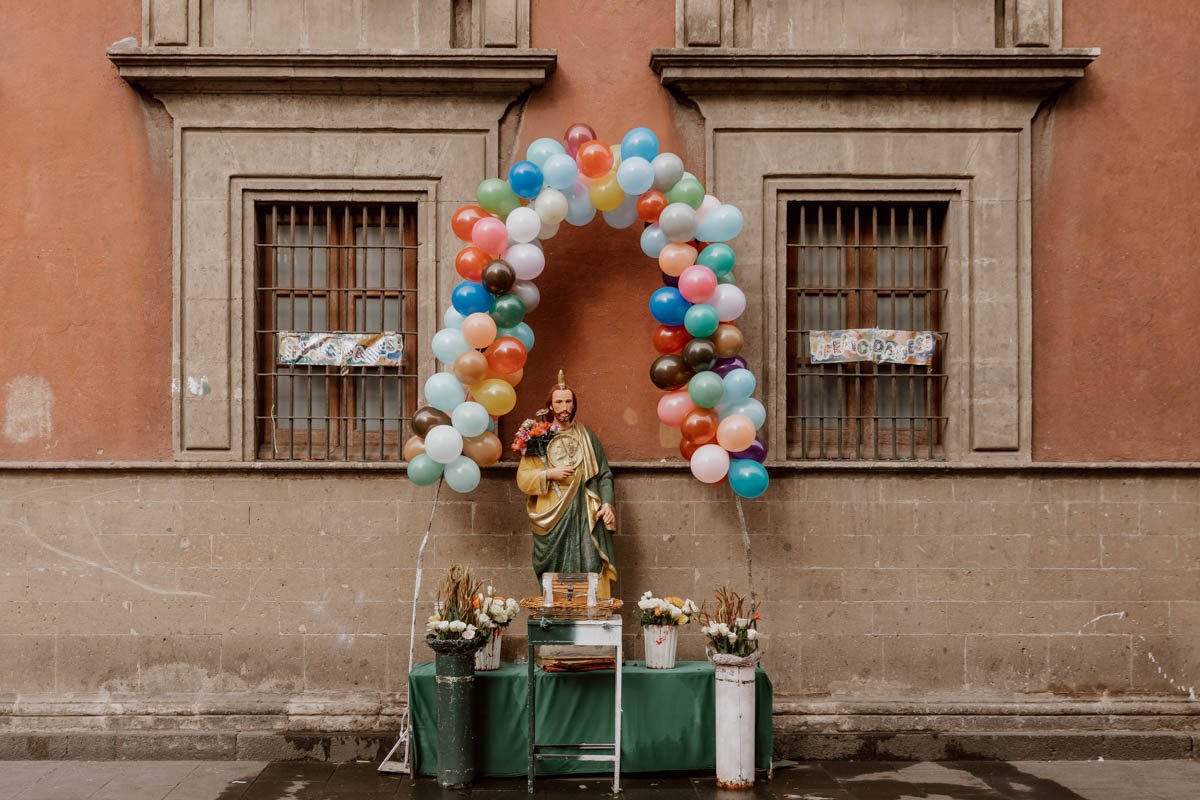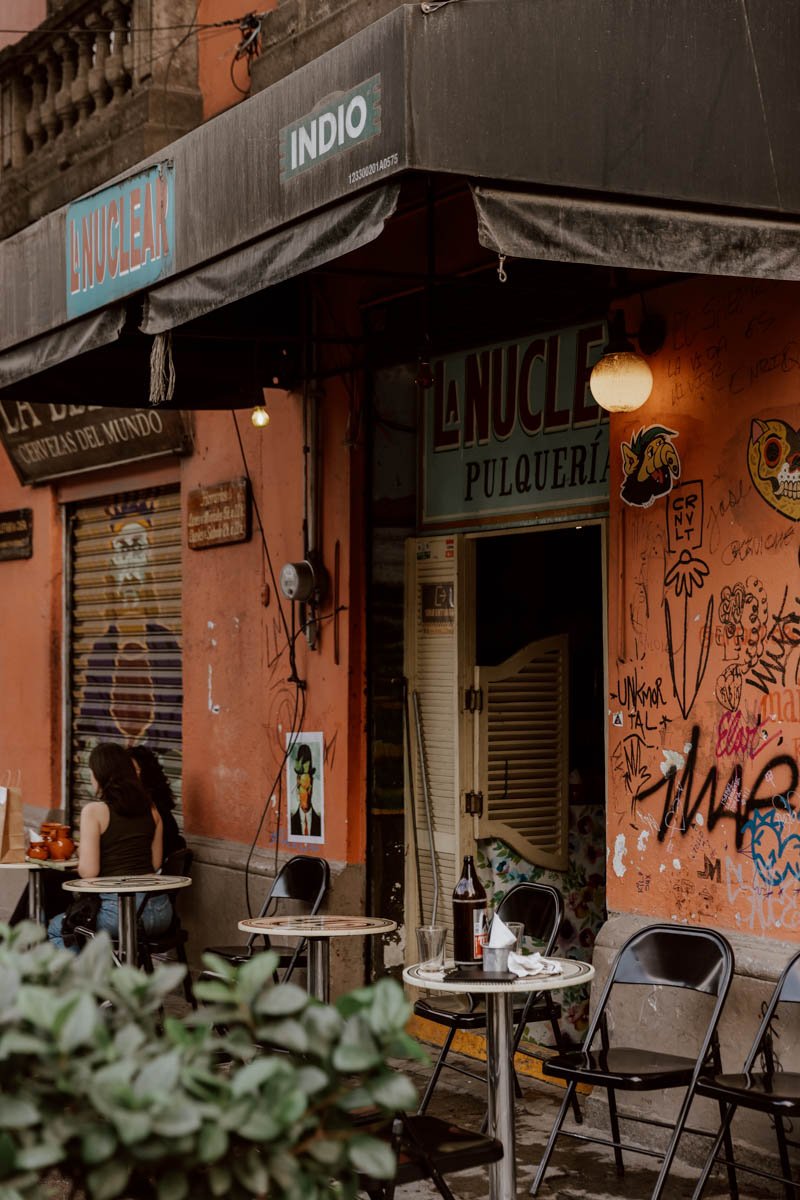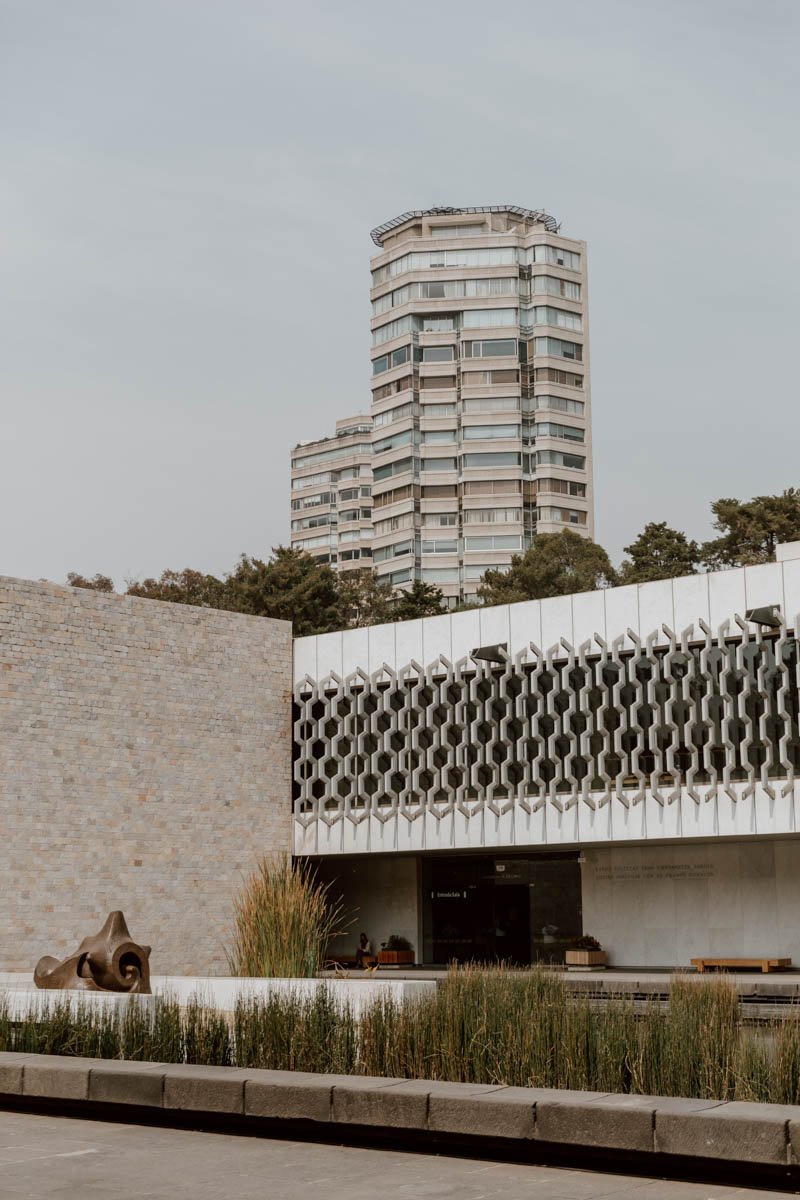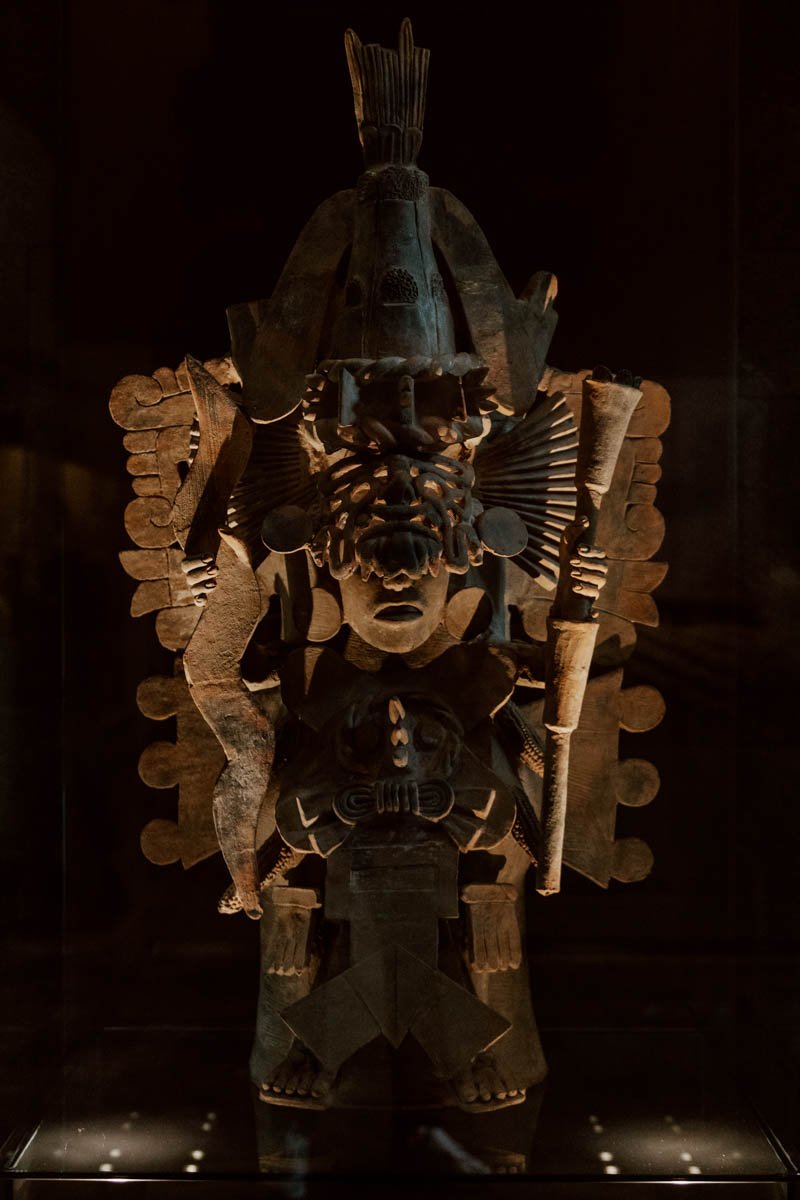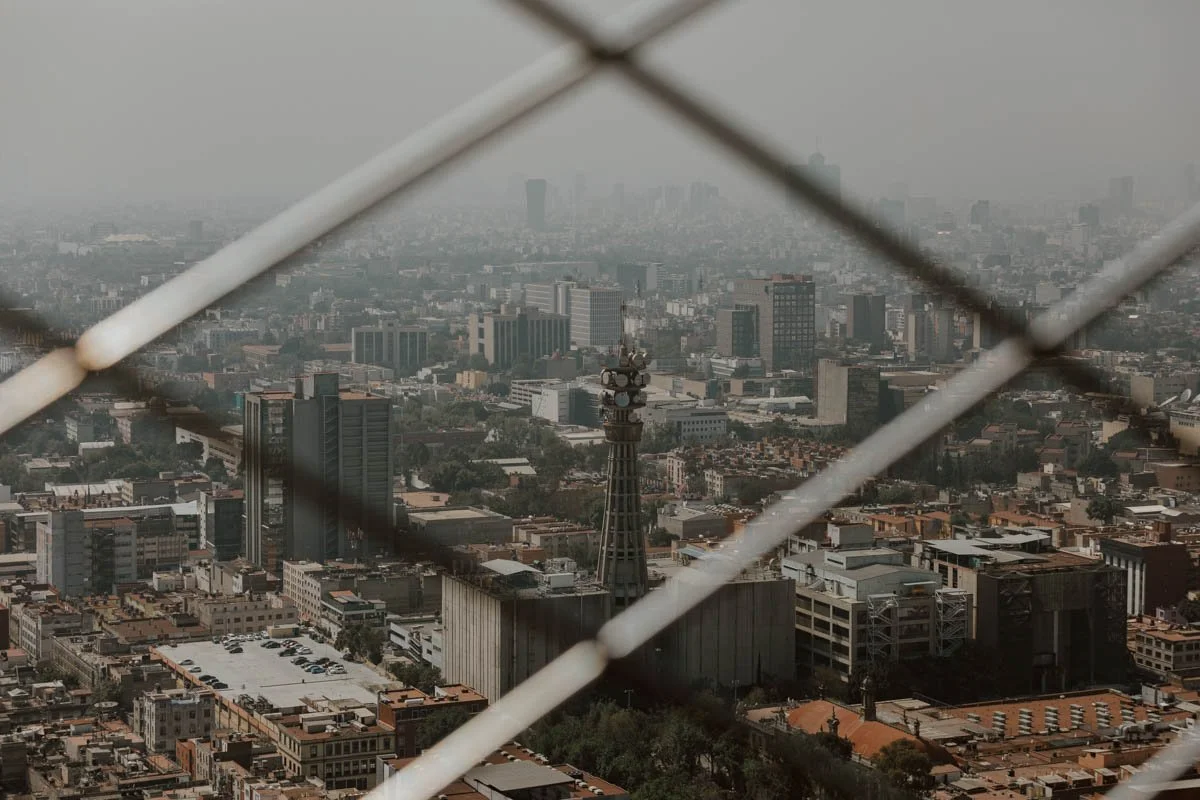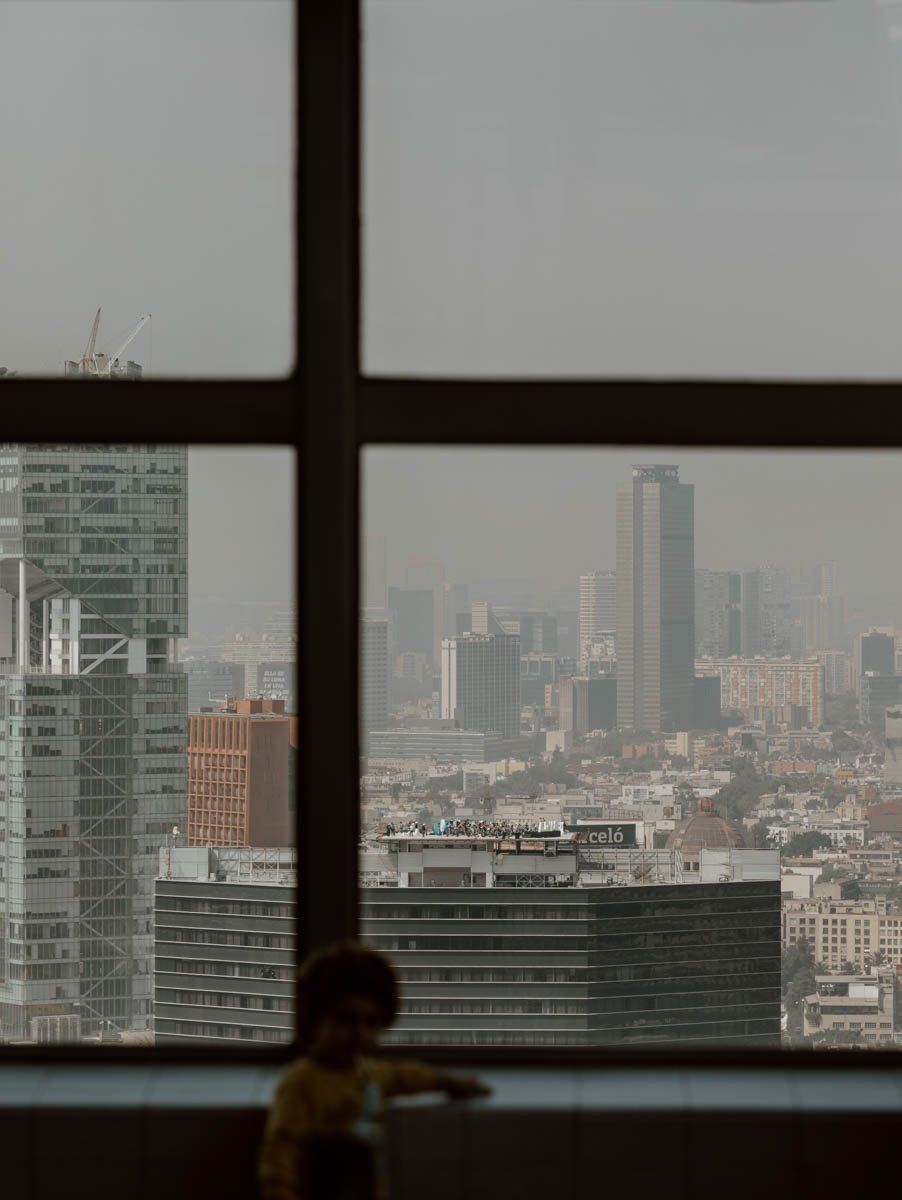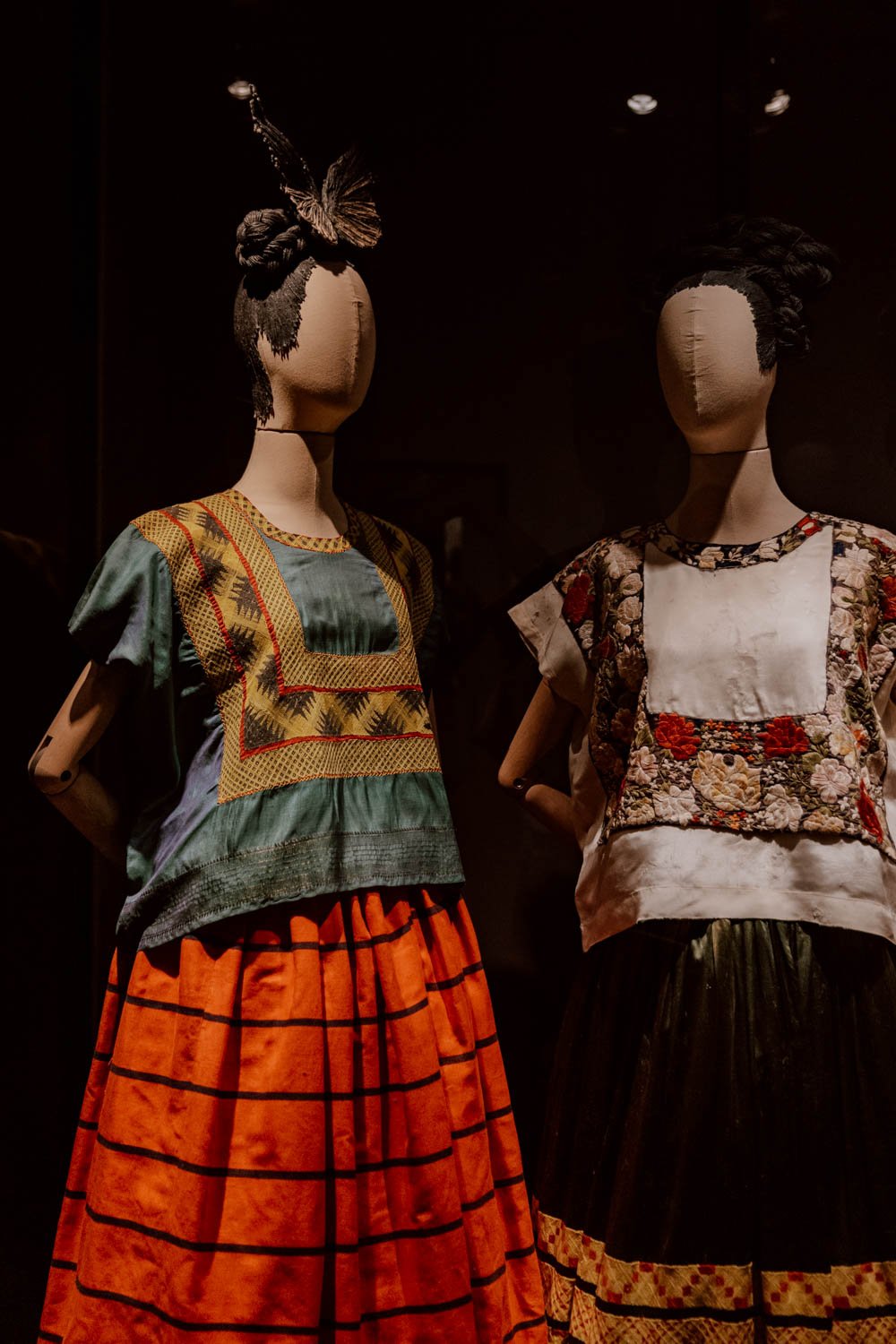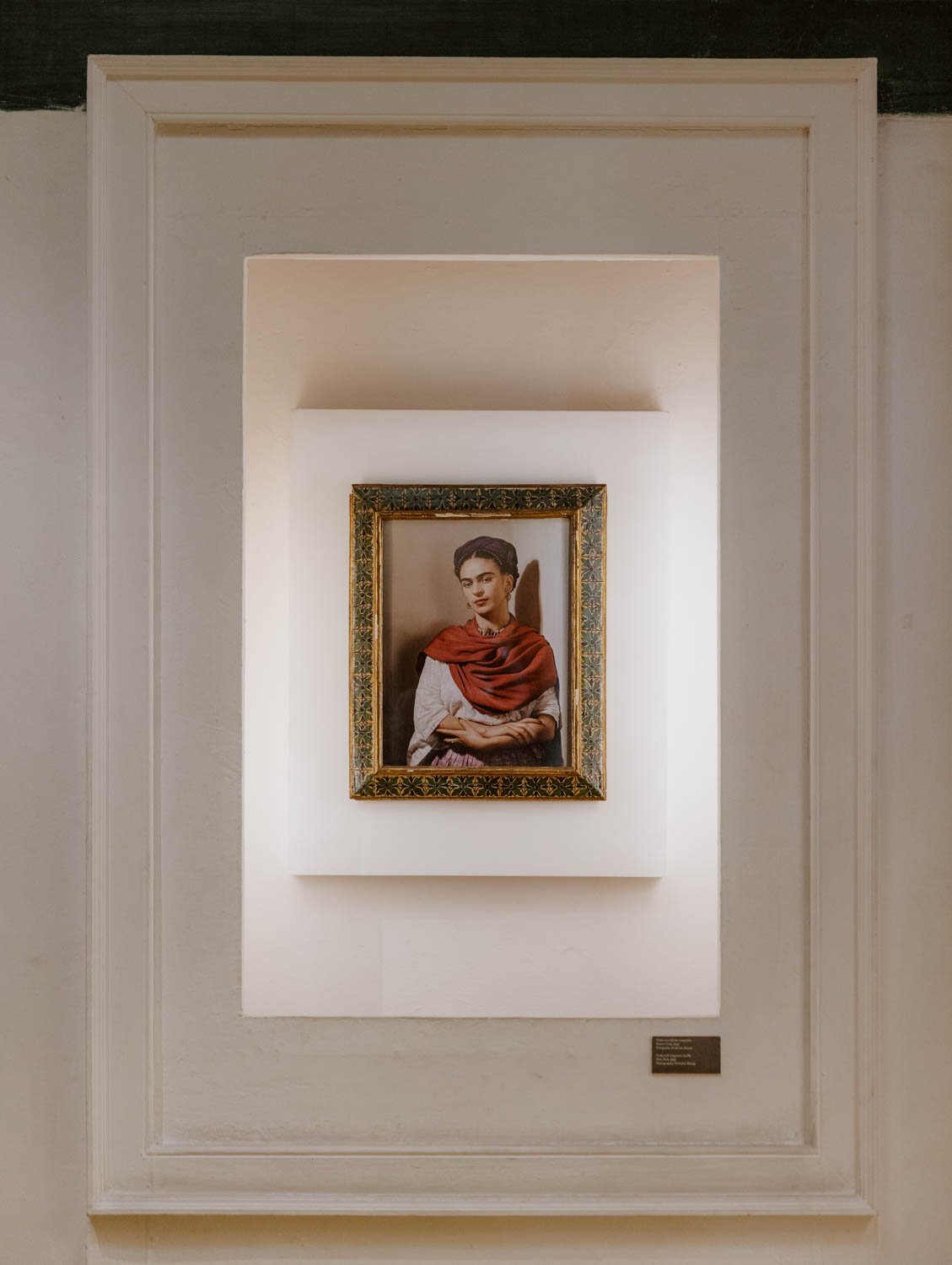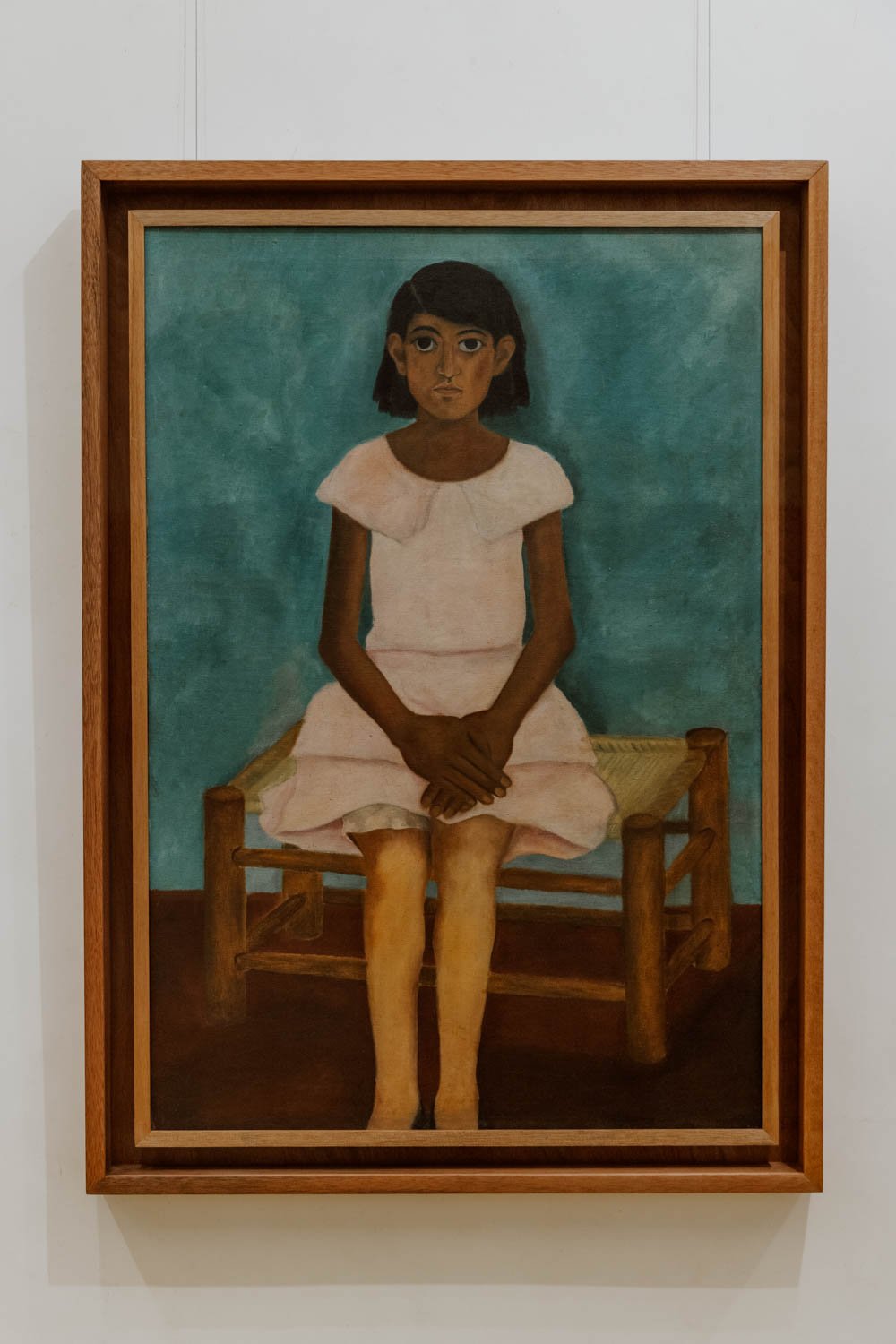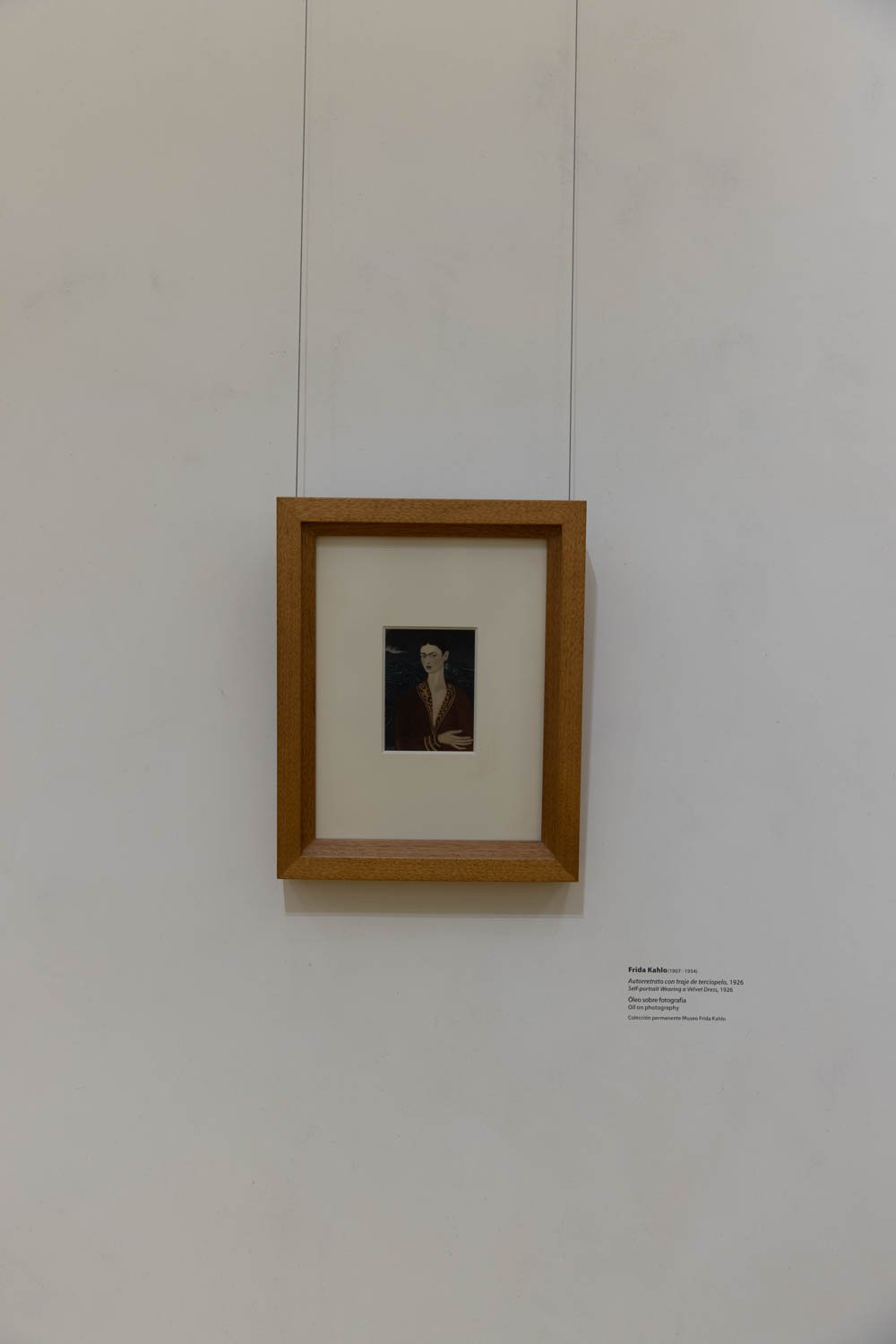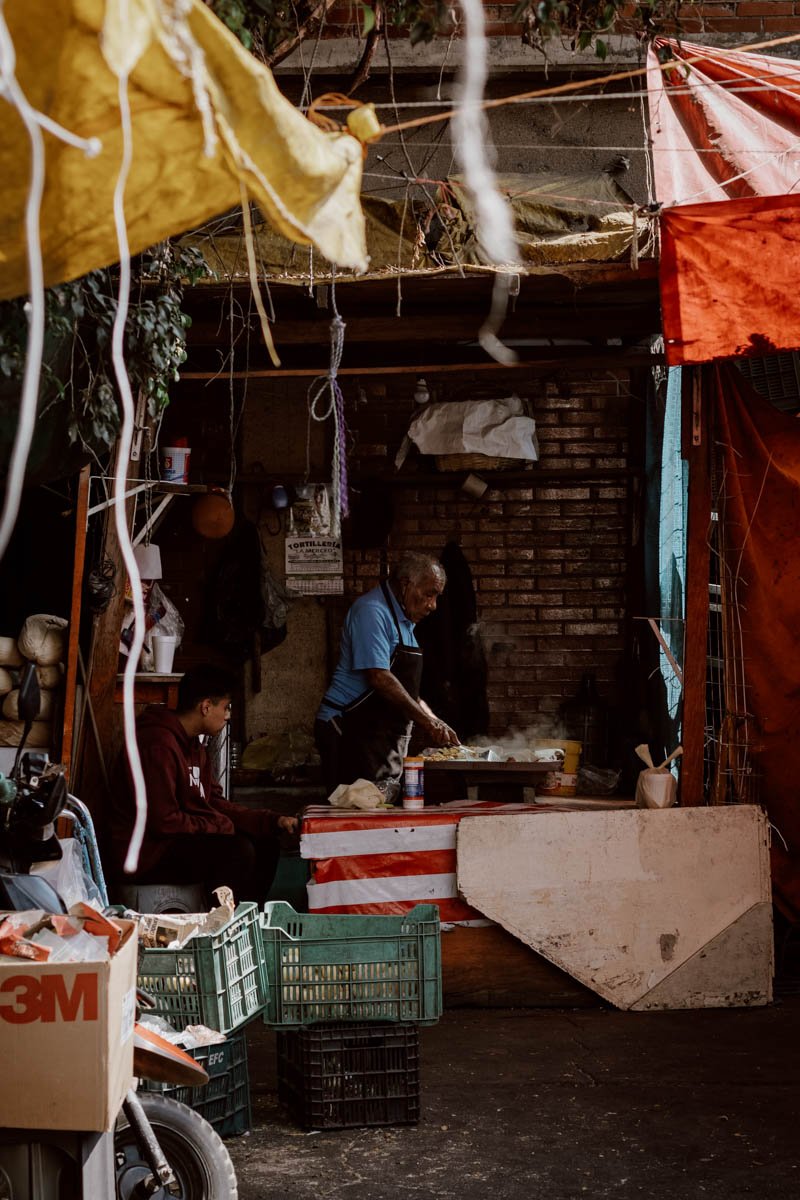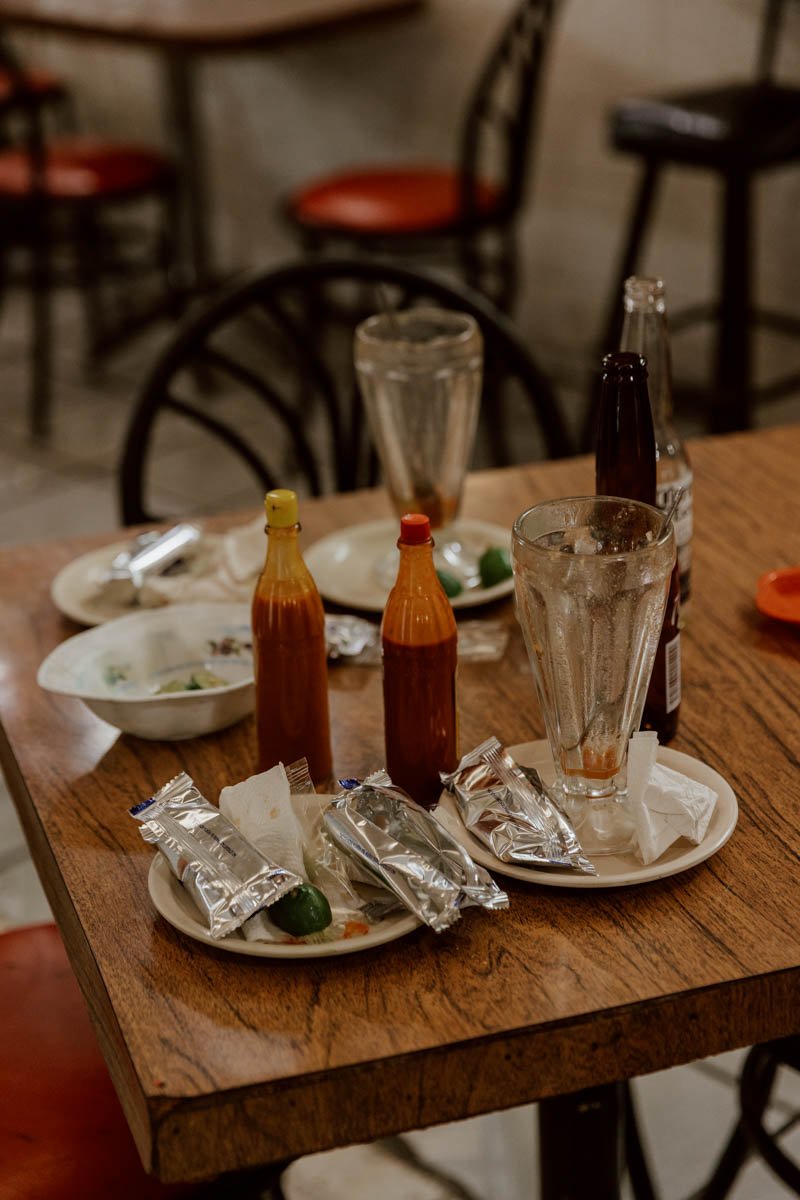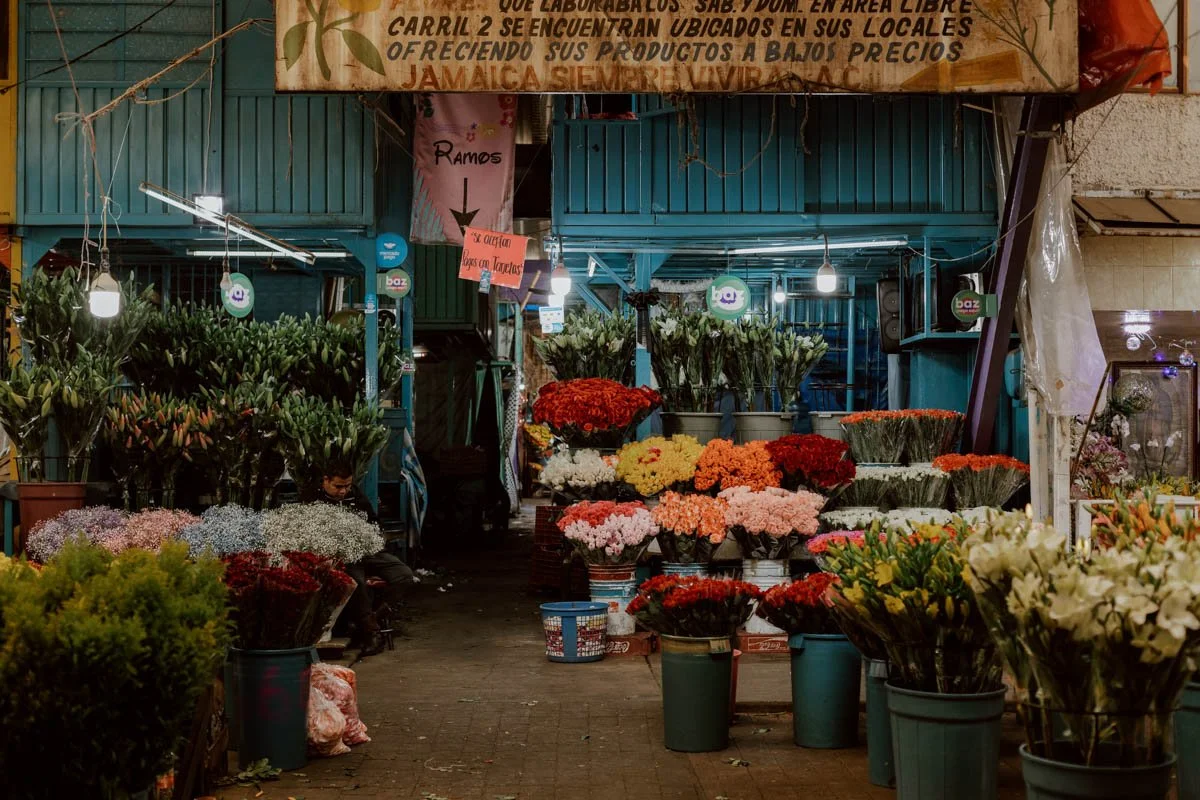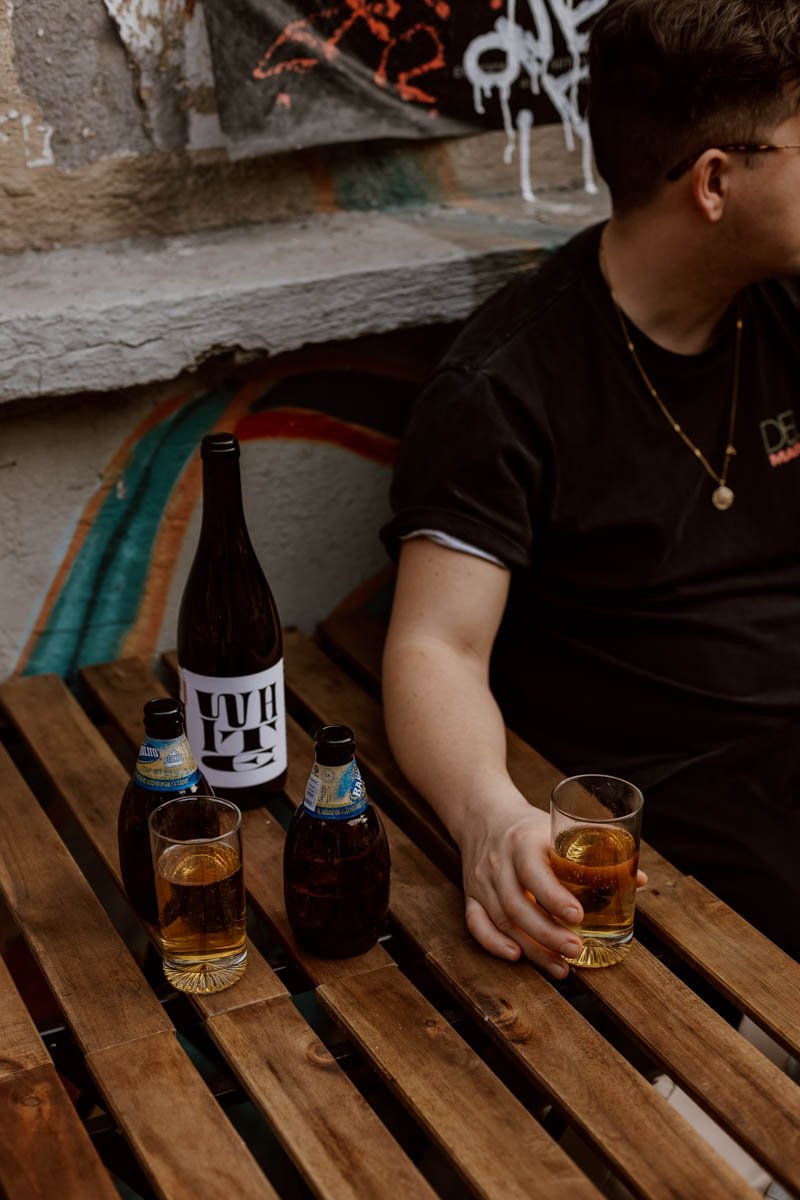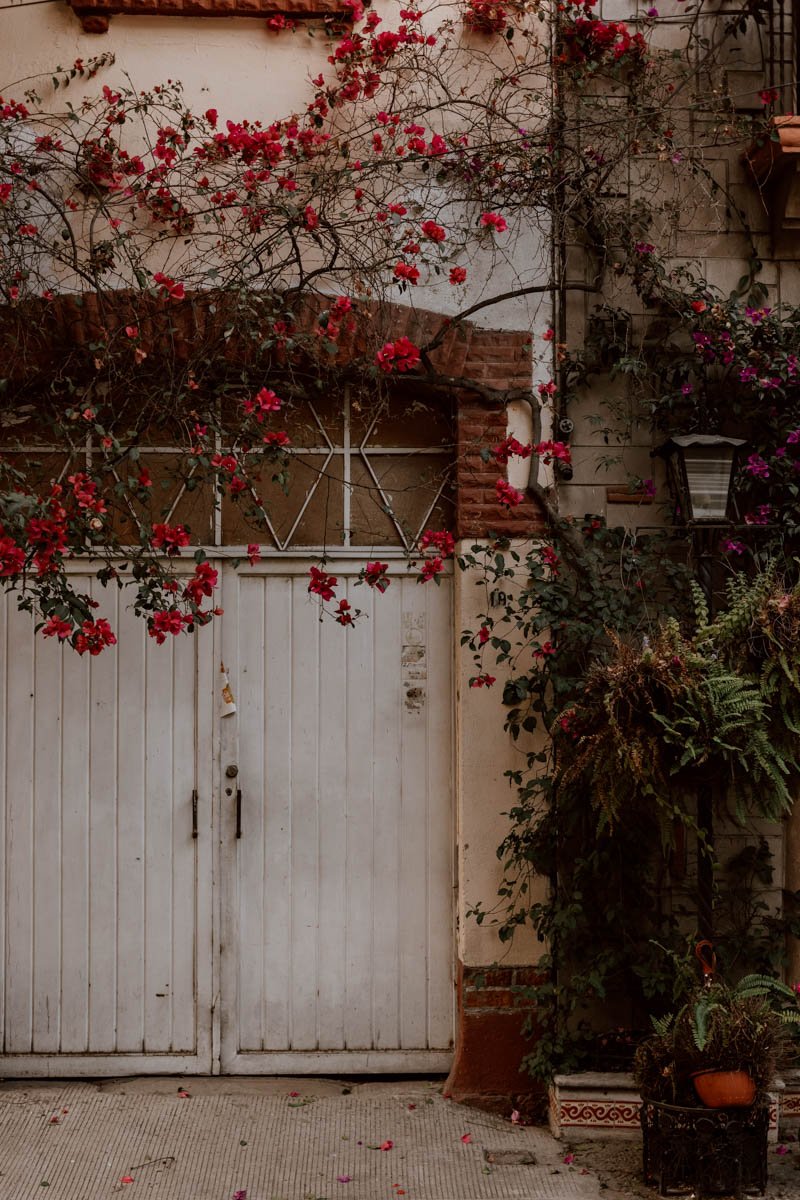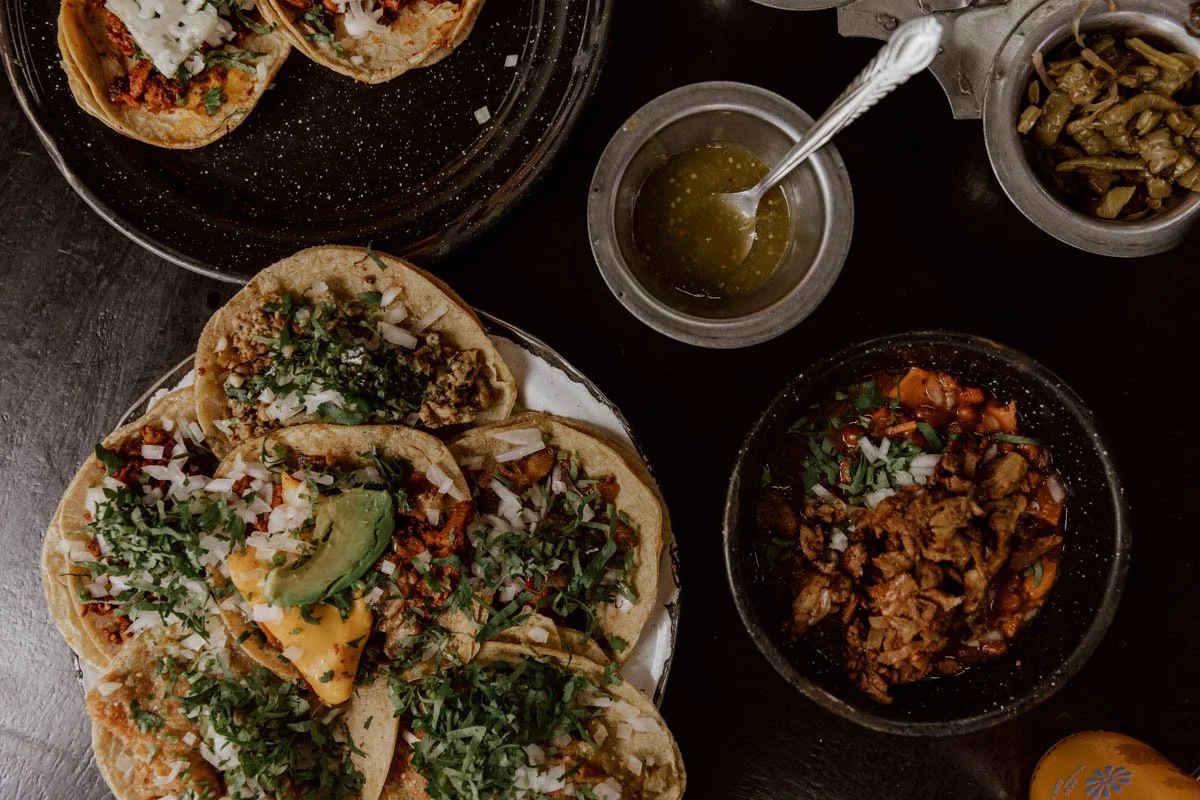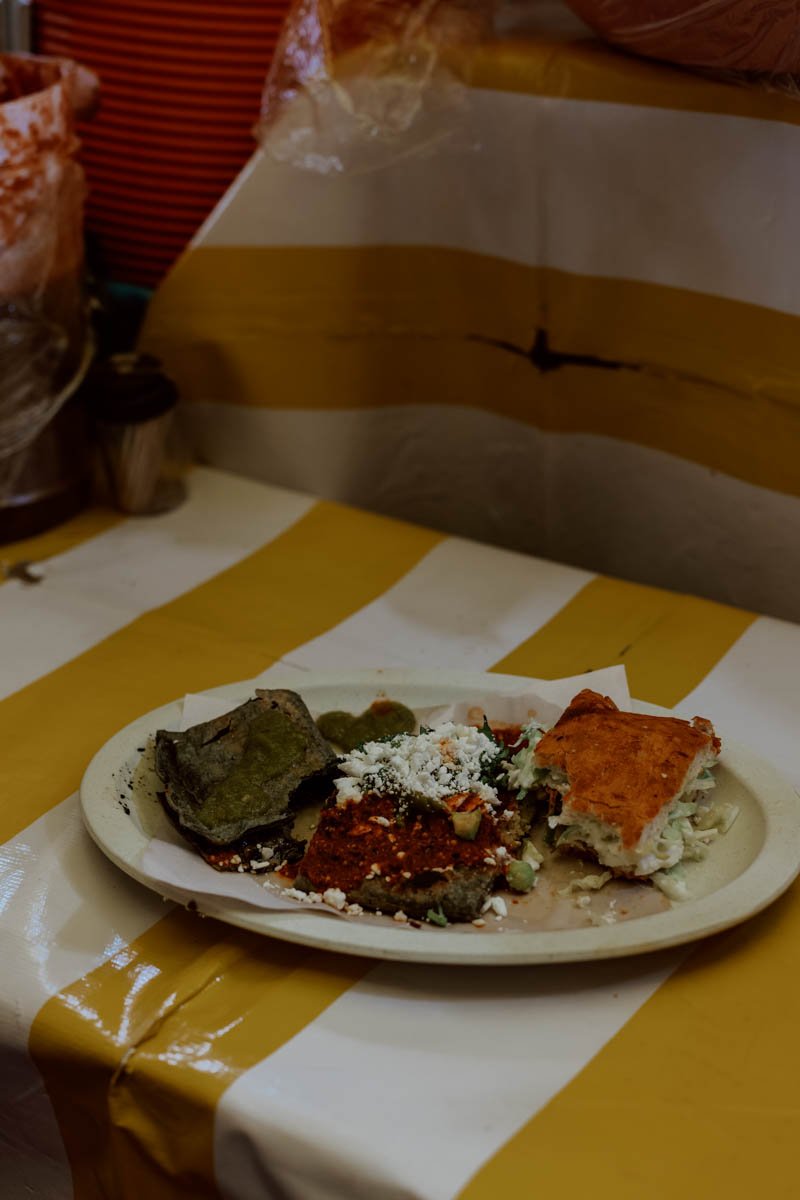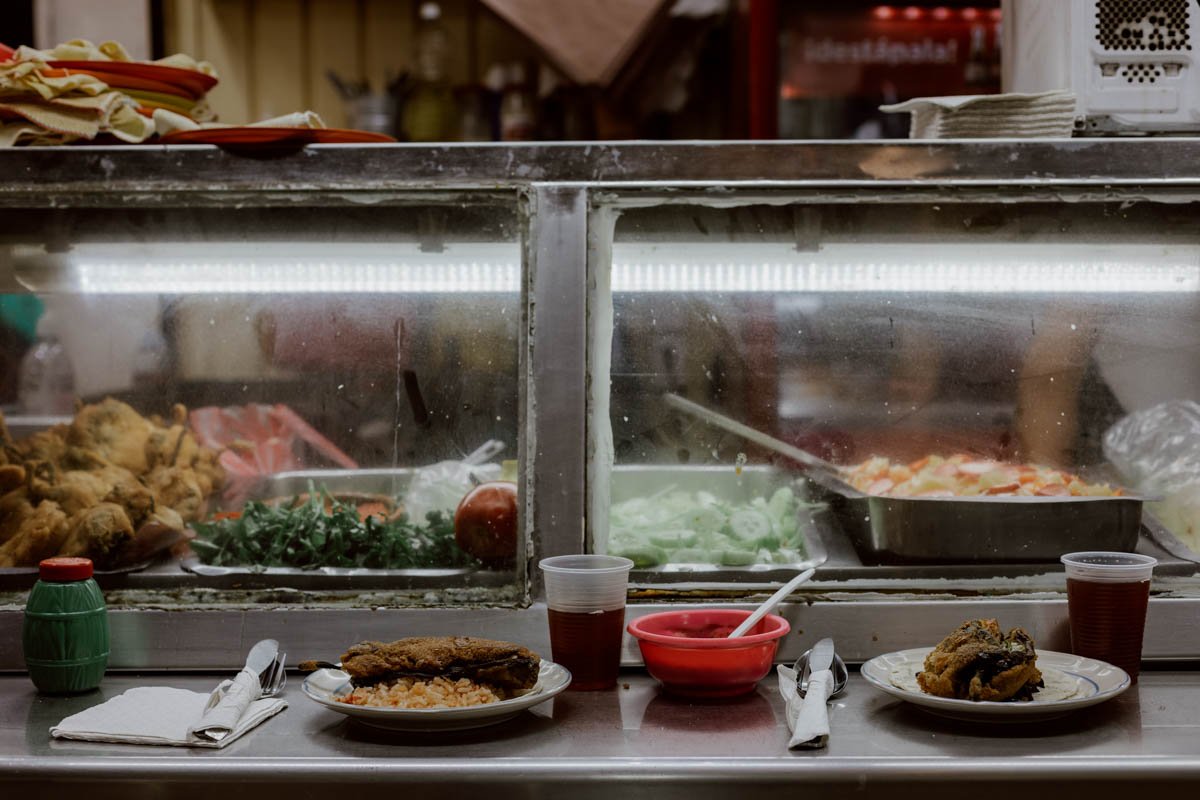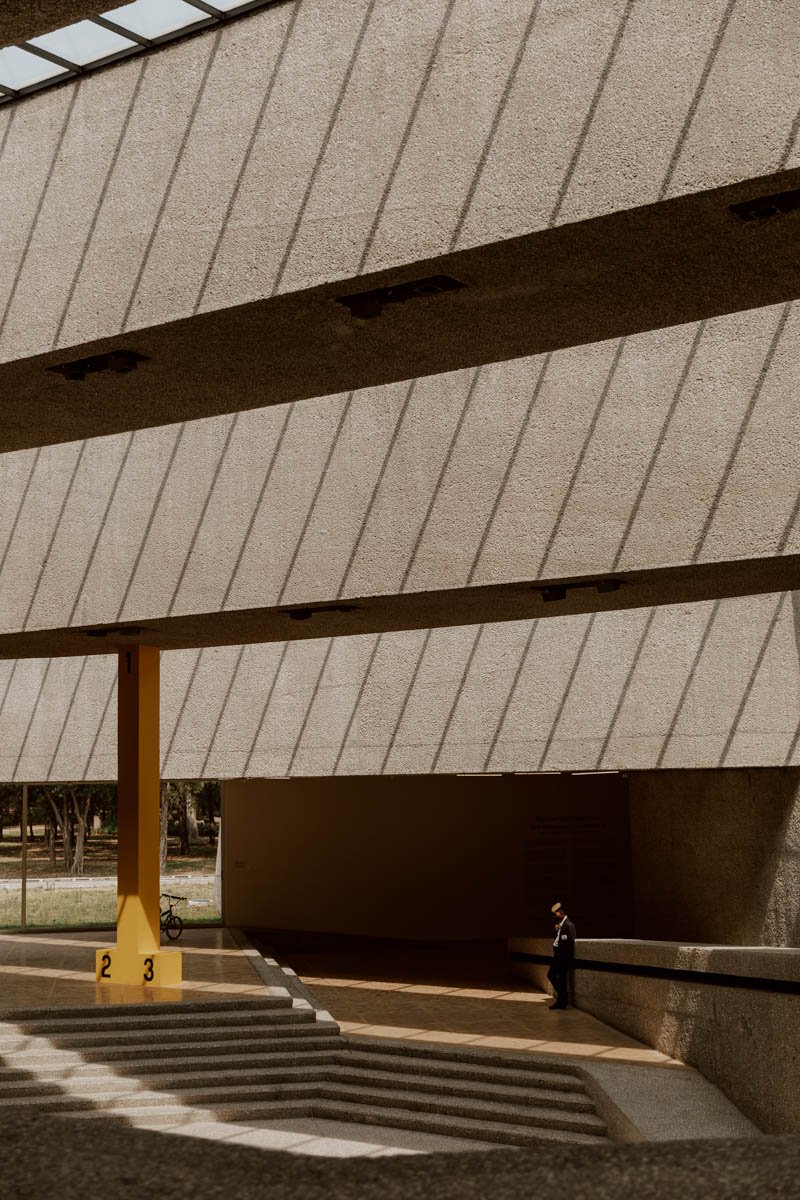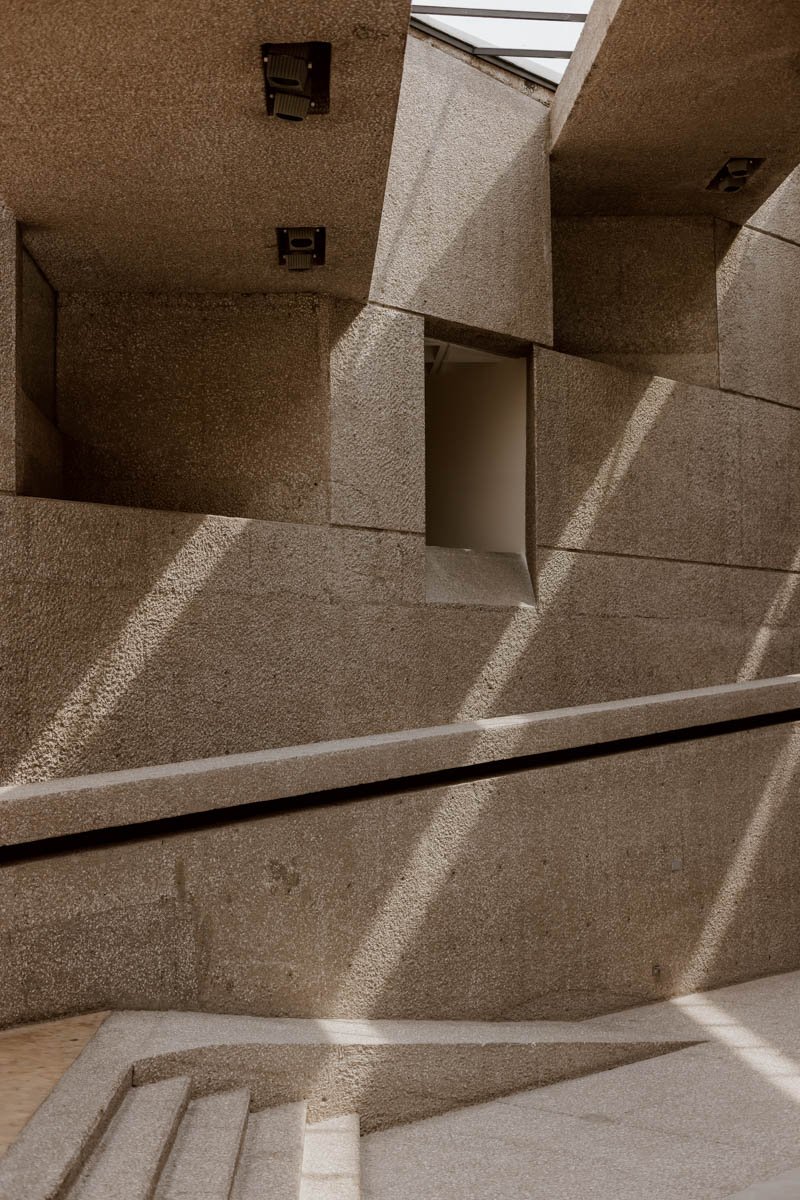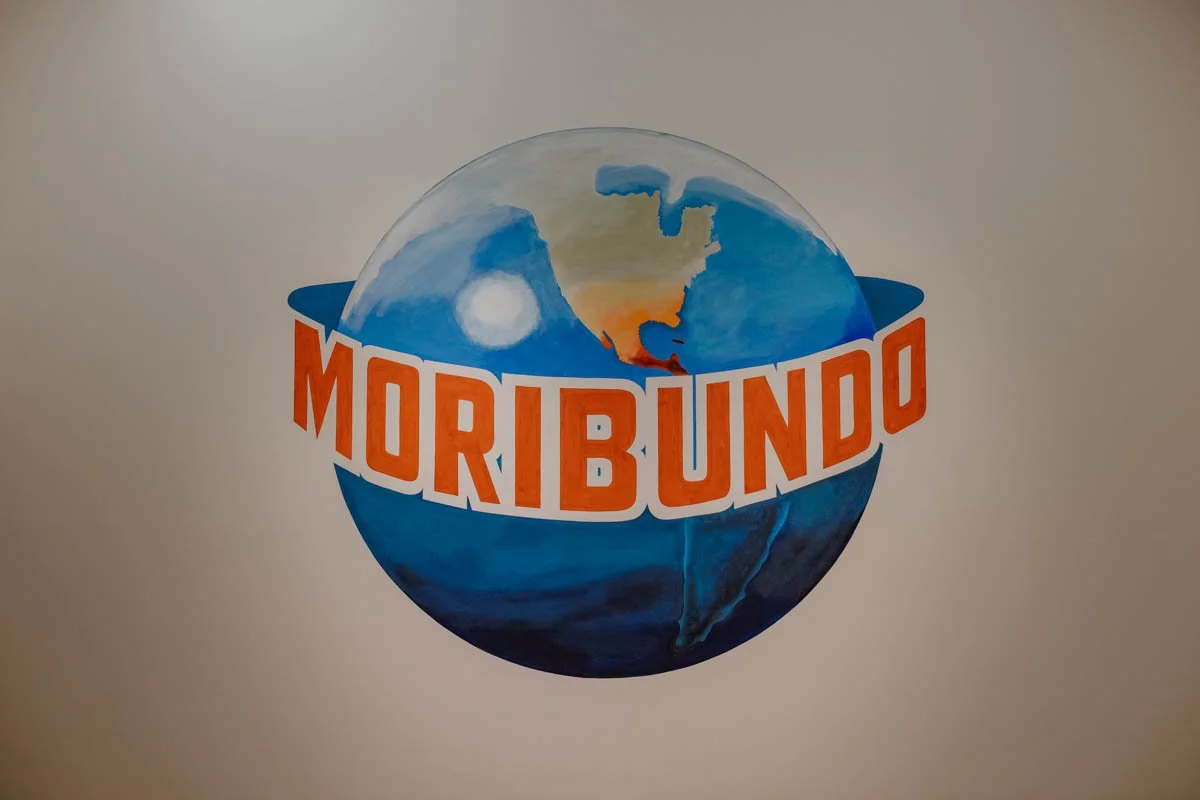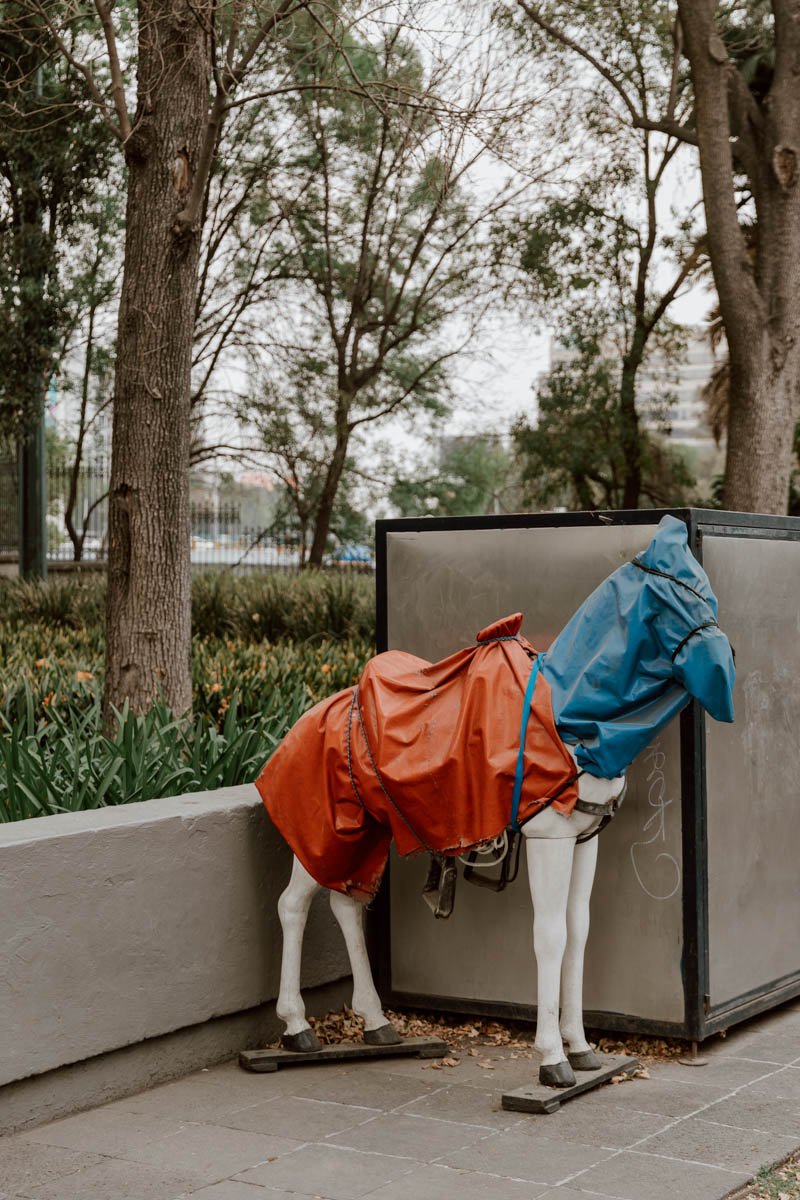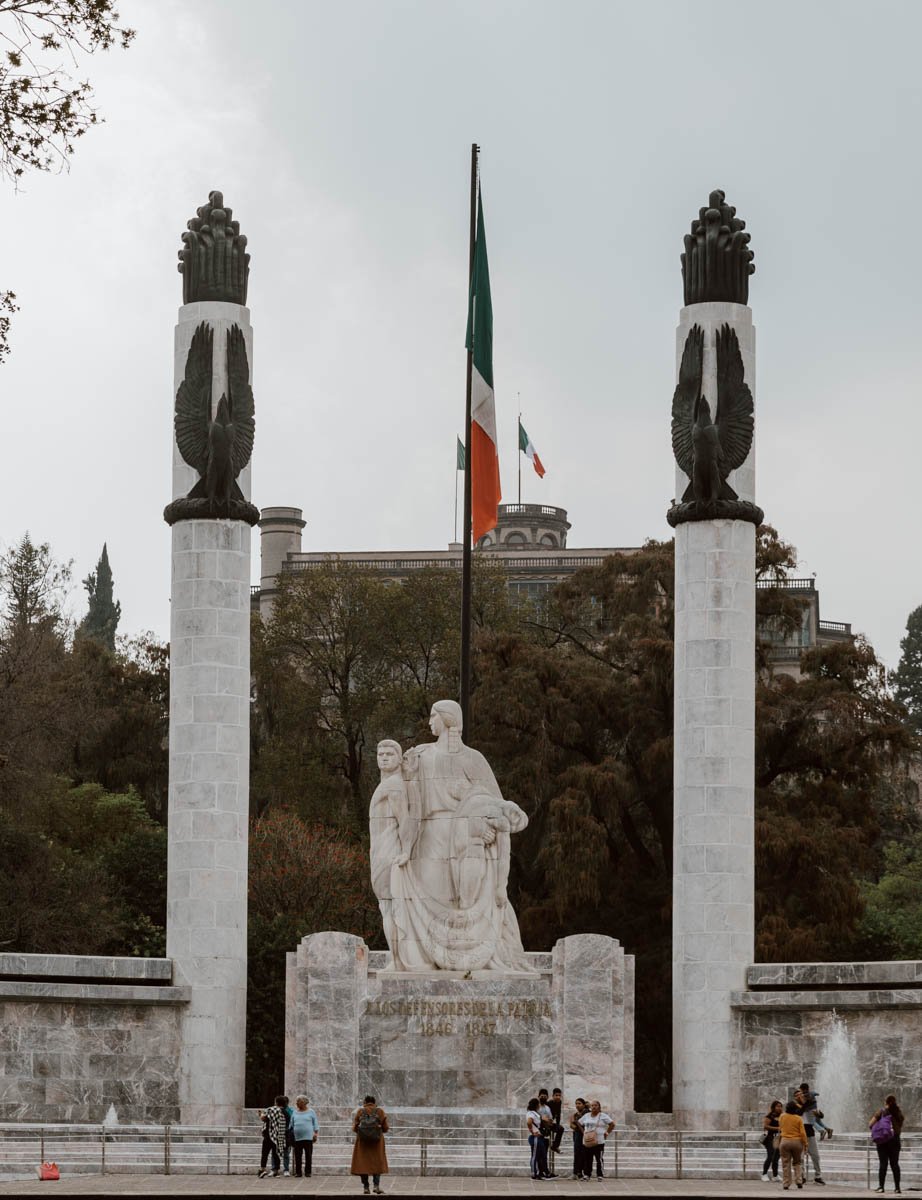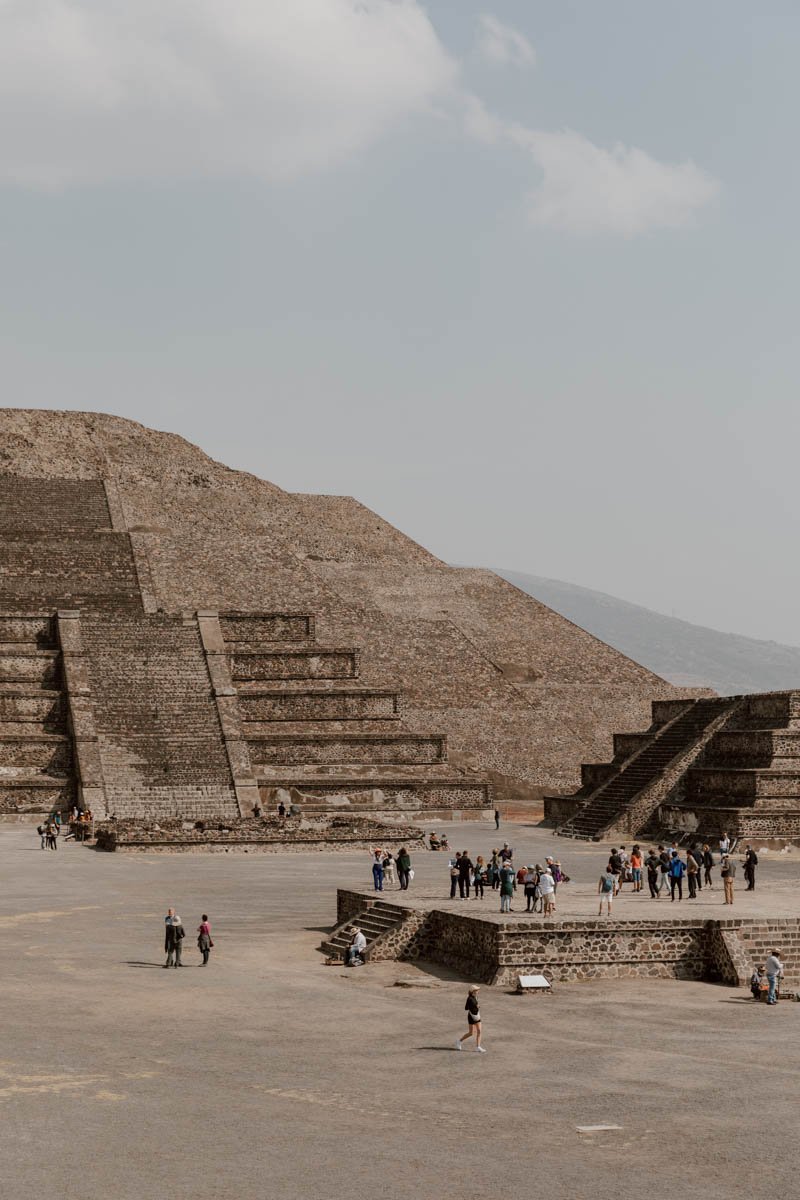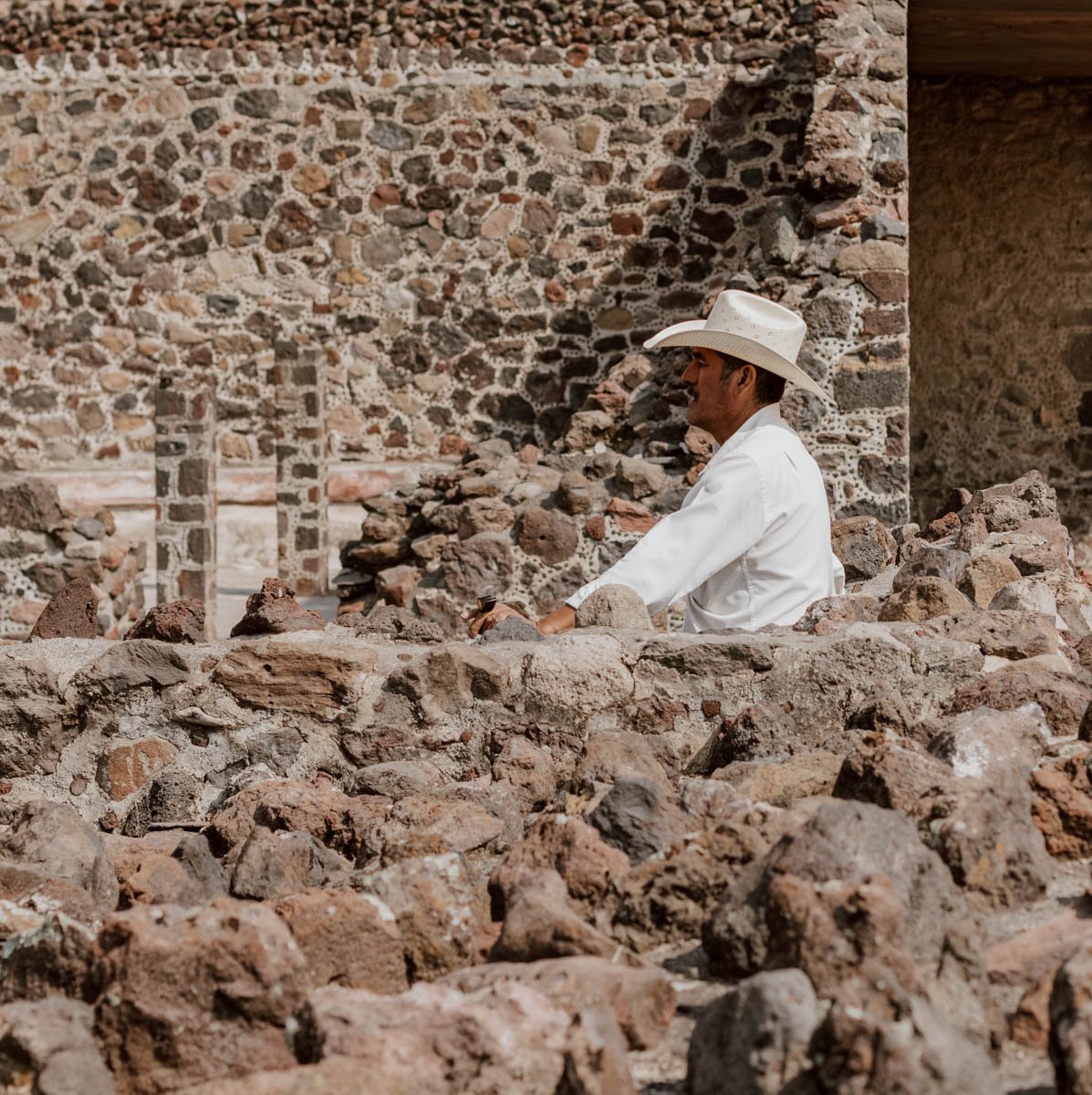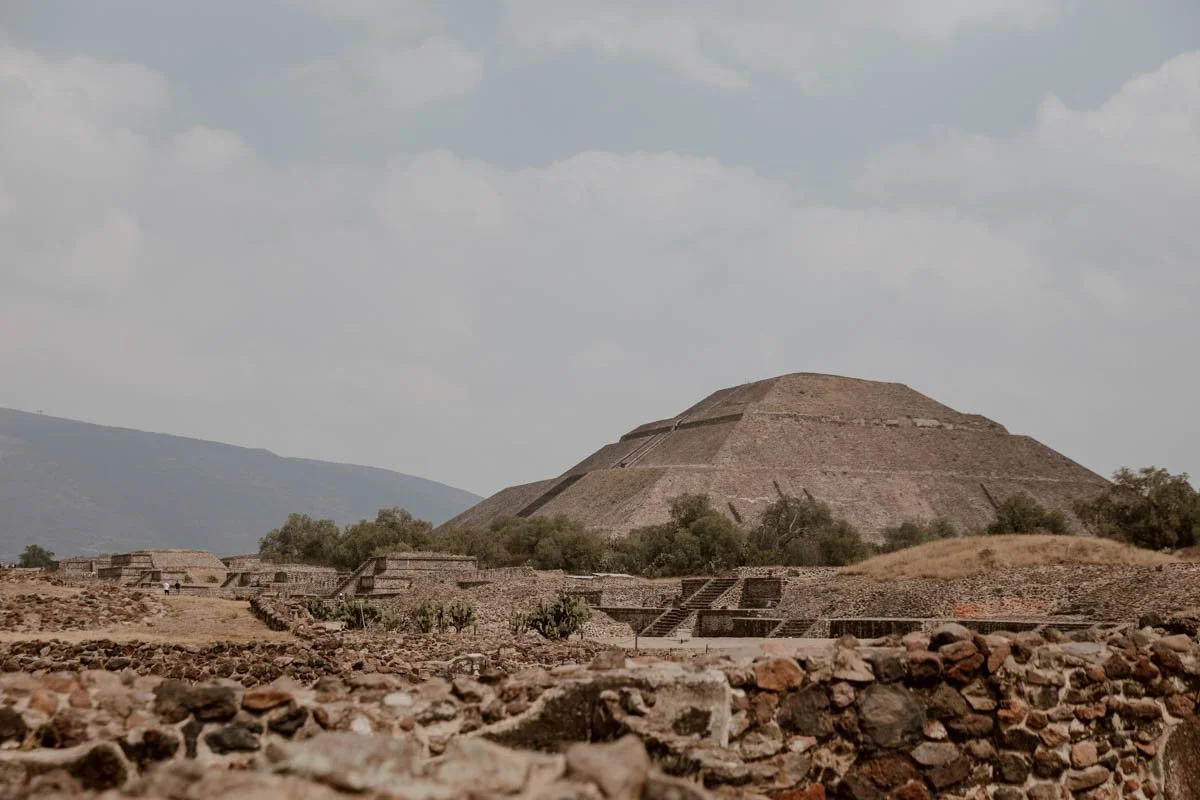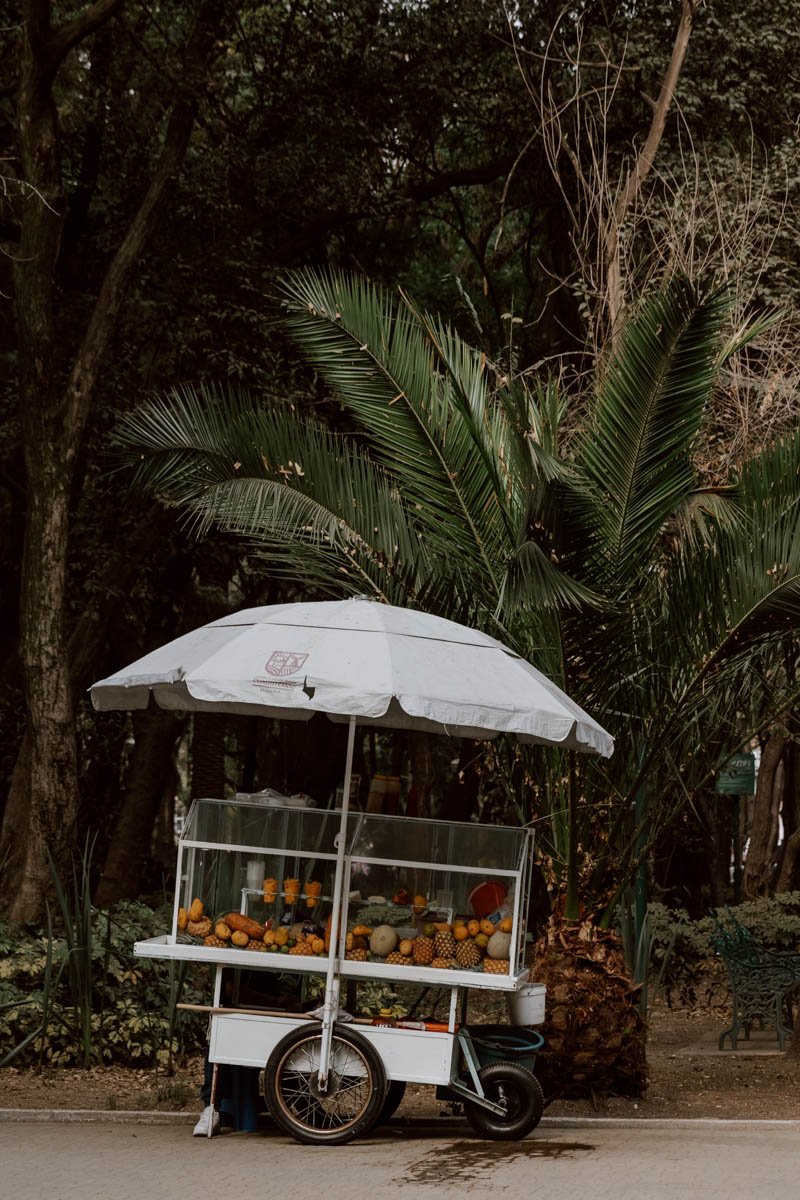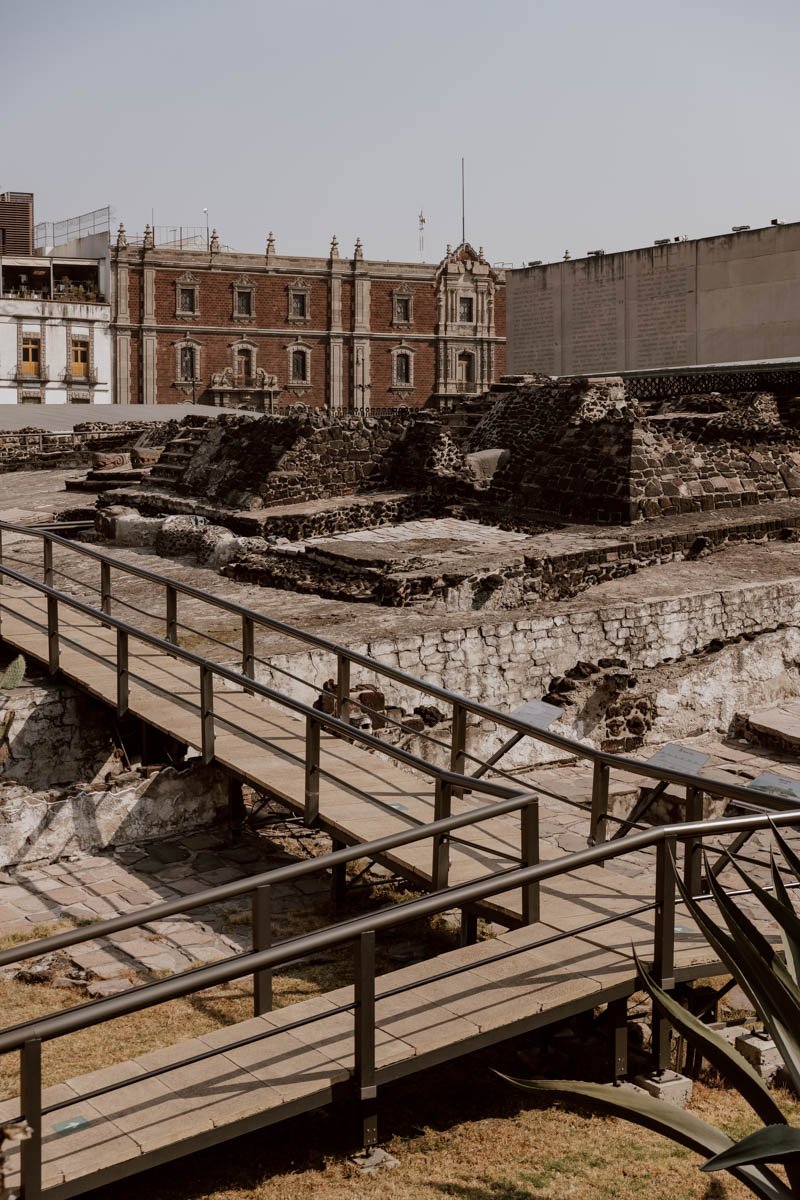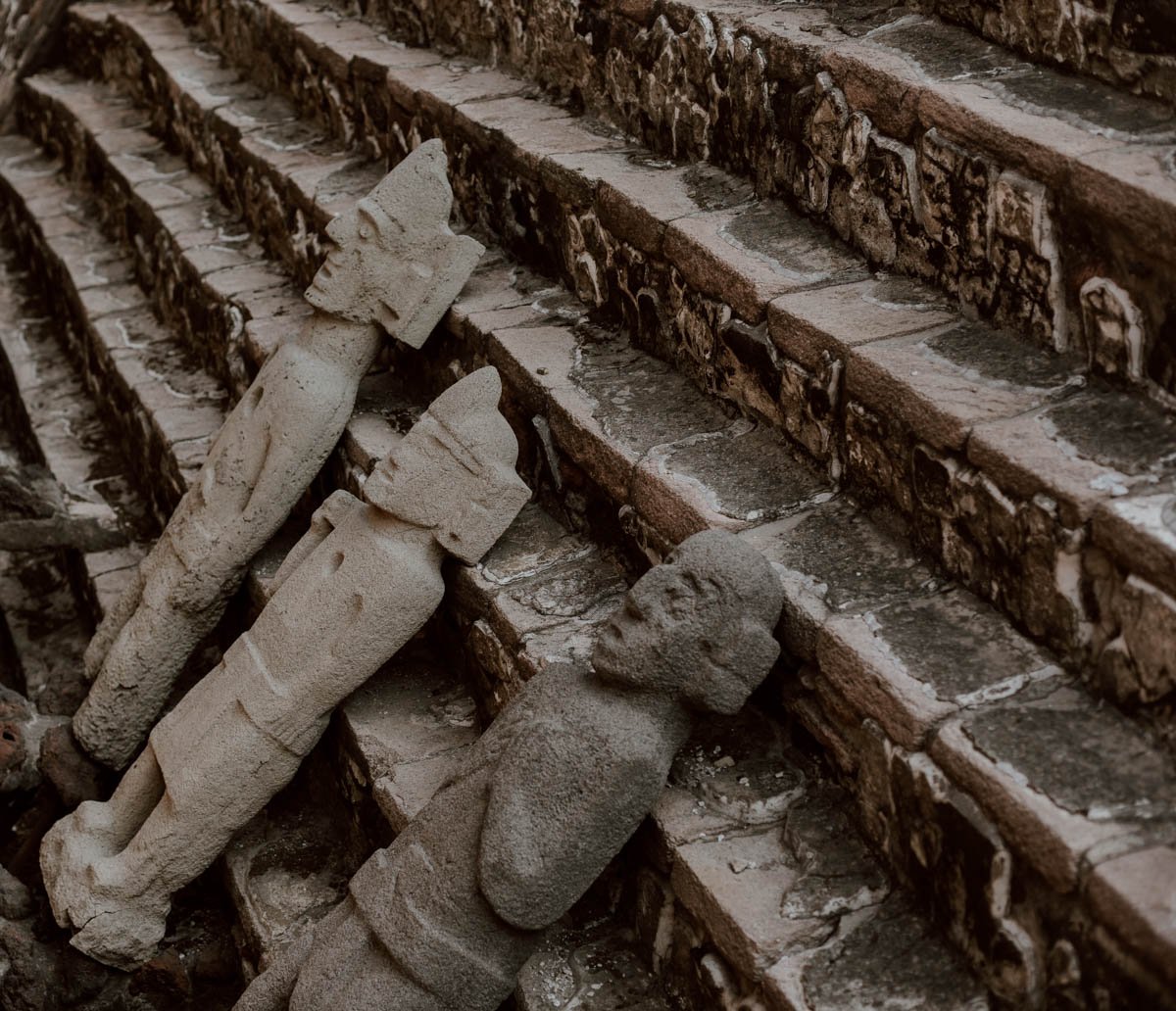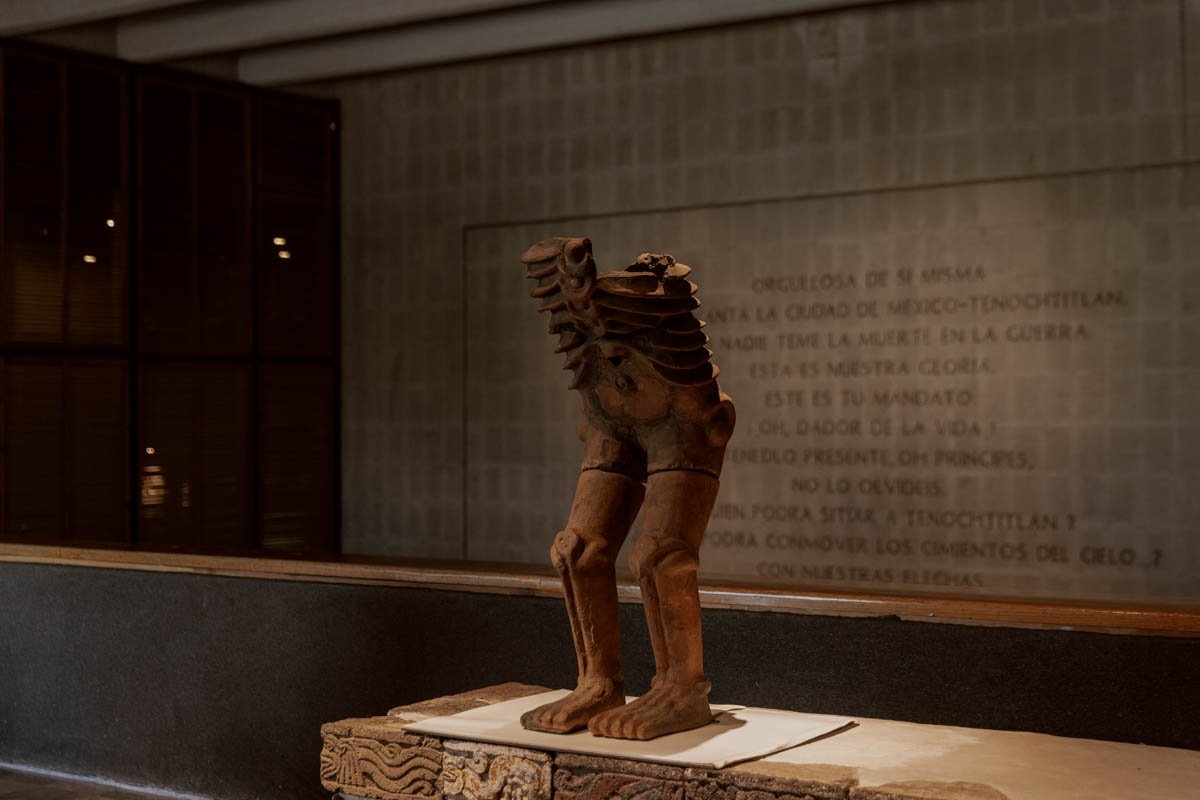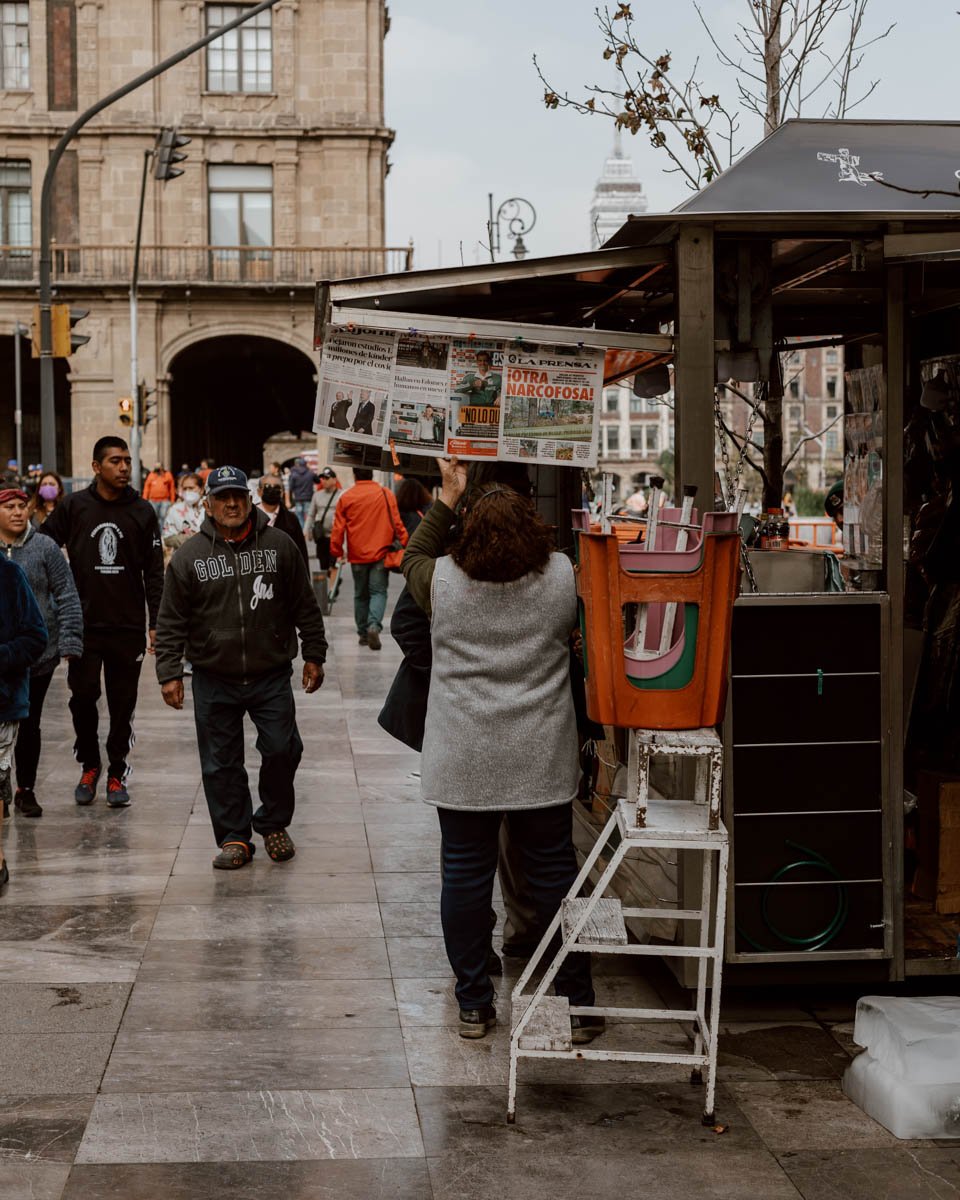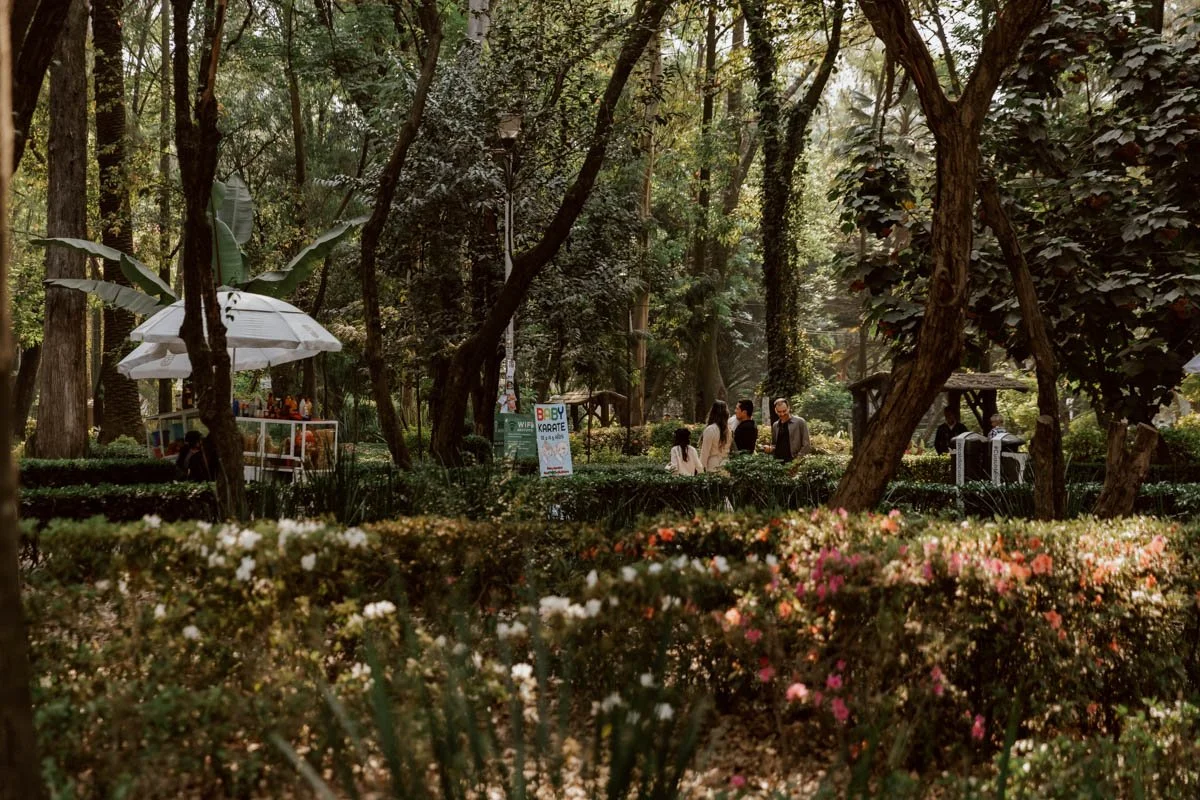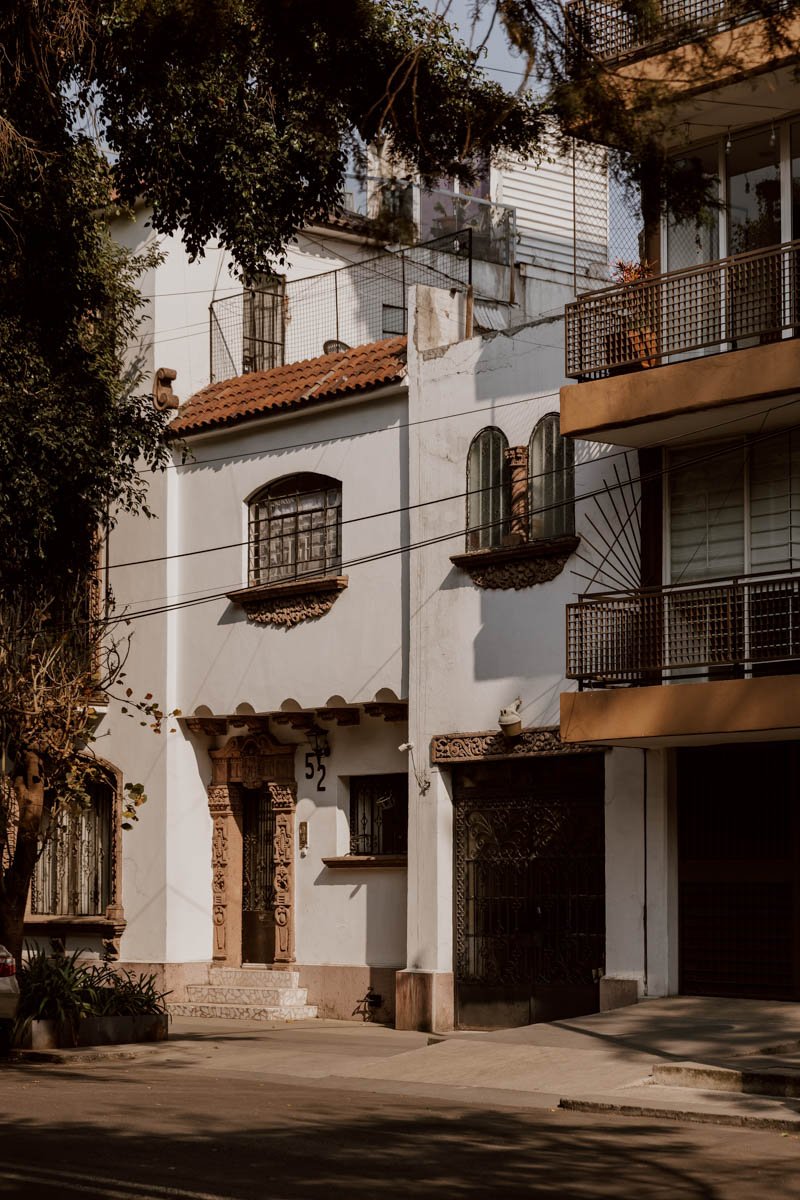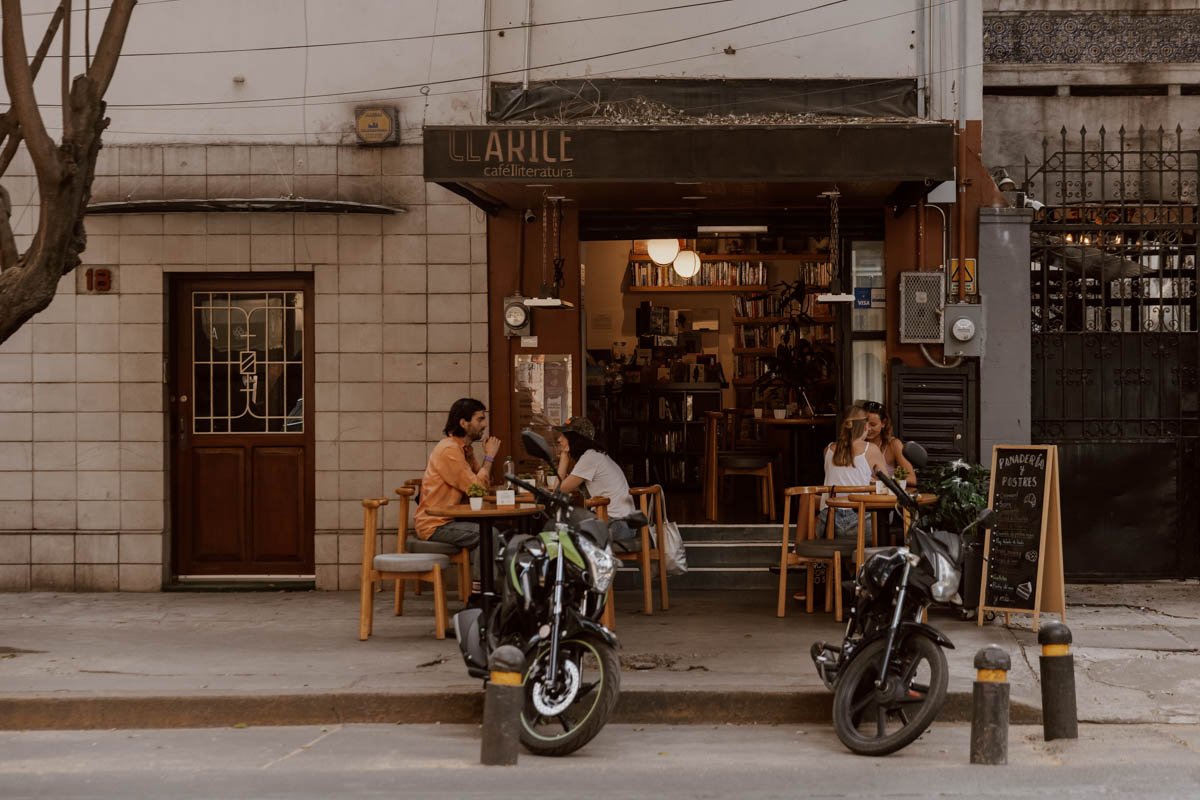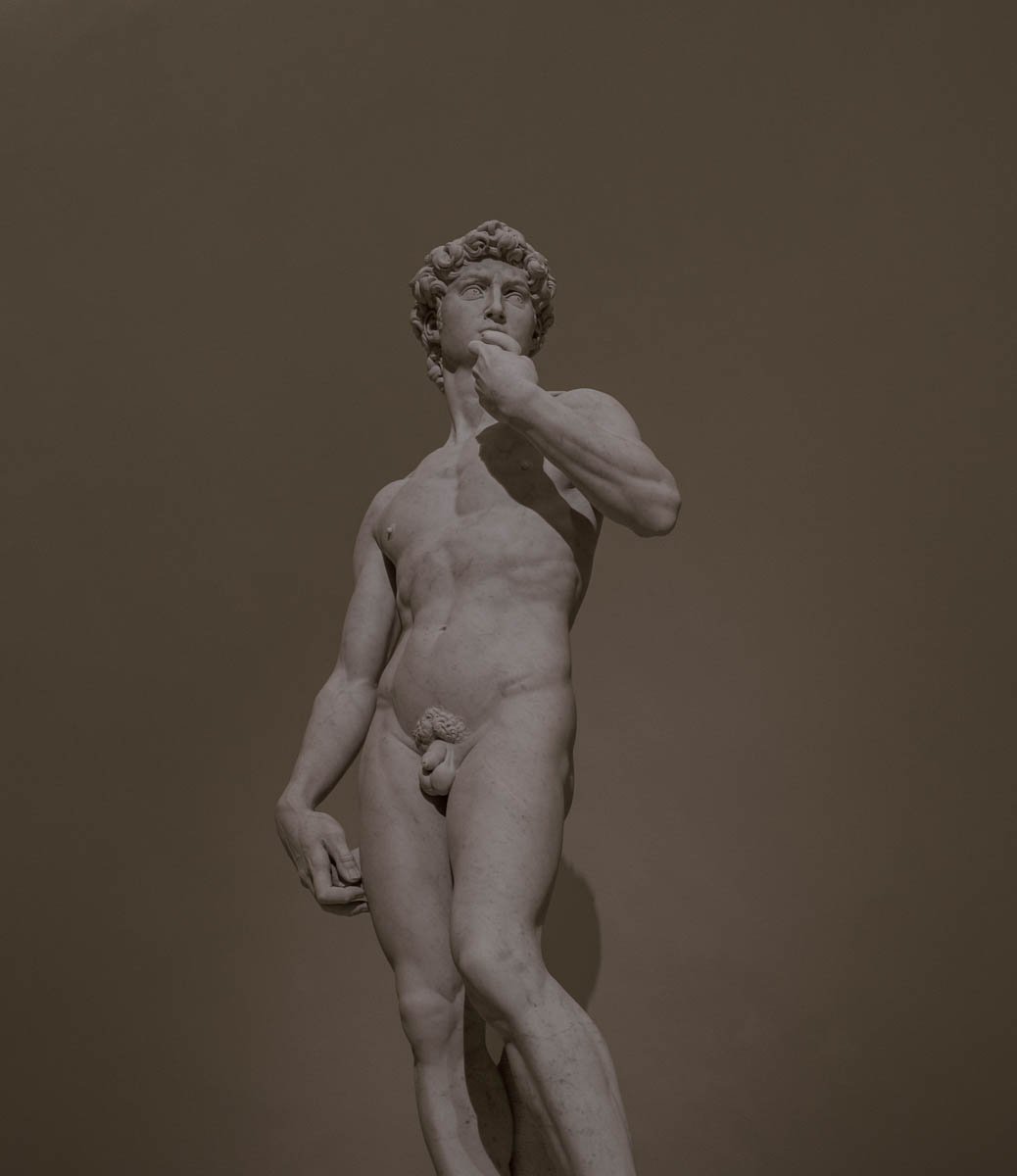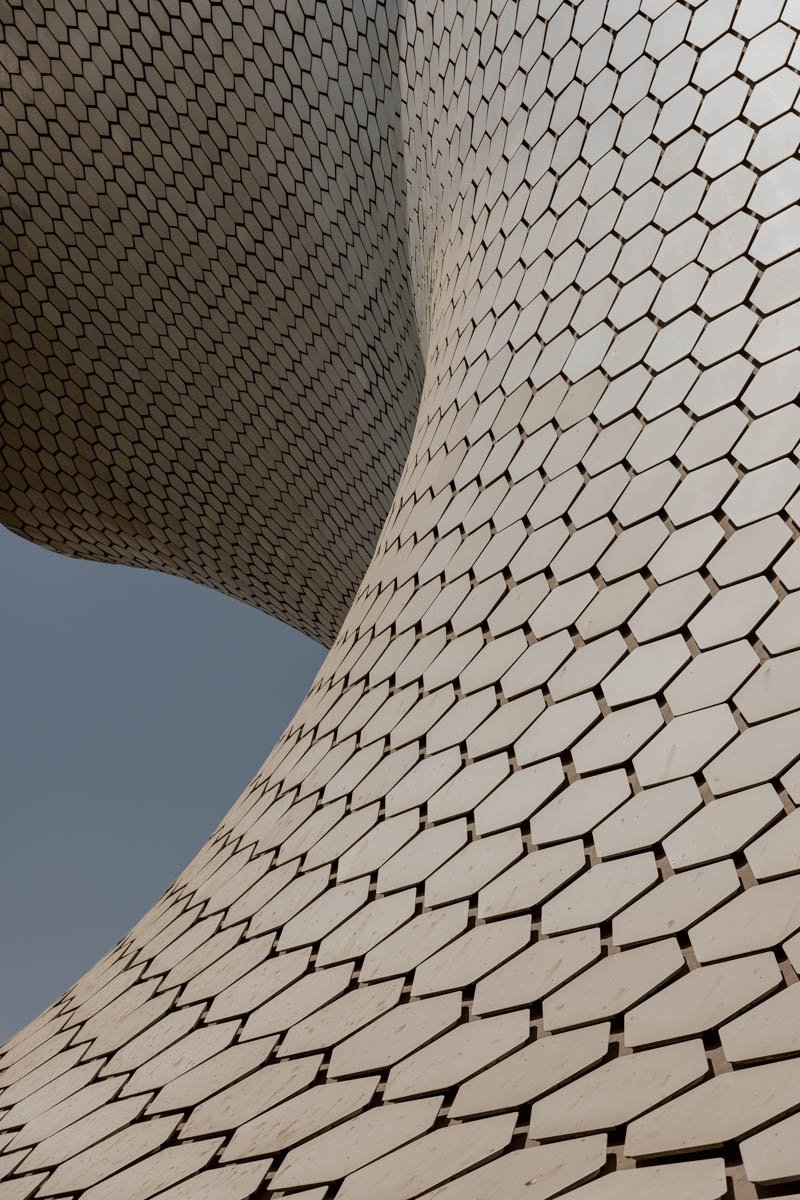If it's your first time visiting Mexico City, our guide will help you perfectly plan your trip
Planning for a trip to Mexico City can be intimidating.
A megacity that’s the most populous in North America and one of the largest metropolitan areas in the world, there is simply no way to cover it all in a couple of weeks, let alone a couple of days.
Instead, the focus of the your first-time in the Mexican capital, should be on curating rather than ‘completing’, with your days based around a blend of places, experiences, and serendipity.
Slow mornings with the artworks of Frida Kahlo and the Aztecs, afternoons eating proper street tacos and getting lost in the frenetic alleyways of the markets, evenings shouting at masked Lucha Libre wrestlers or bar-hopping in the trendy neighbourhoods.
Achingly cool and cosmopolitan in parts, whilst wonderfully and wholeheartedly Mexican in others, Mexico City will unveil itself slightly differently to the hipster vs. the historian, the fashionista vs. foodie, and art lovers on a city break from the States vs. budget backpackers just starting out a big trip through Latin America.
Whatever your travel style, our curated personal guide to Mexico City (also known as CDMX) will help you avoid the overwhelm, make the most of your time, and leave with positive memories. As well as all the context, information + inspiration you need to plan ahead, these are the places and the experiences which we think you simply can't miss on first visit to the Mexican capital.
This is 13 Wonderful Things to Do in Mexico City.
The Essentials | Mexico City
Visit / The fantastic National Anthropology Museum on your own or with a specialist tour
Views / Go up the observation deck of Torre LatinoAmericana (buy skip the line tickets)
Blue / Step foot in Frida Kahlo’s home at Casa Azul
Do / Join a social group tour for night at the famous lucha libre wrestling
Browse / The markets of Lagunilla, La Merced and Jamaica
Explore / The hipster Roma Norte neighbourhood and the leafy Barrio Condesa
Eat / Tacos at Por Siempre Vegana, splurge at Pujol, and join a street food tour
Art / The contemporary galleries of Tamayo and Jumex
Trip / Explore the mysterious Teotihuacan Pyramids
Dig / Visit the Aztec ruins of Templo Mayor
Walk / The huge zócalo and streets of the historical centre (or book a walking tour)
Drink / Pulque at La Nuclear or Mexican coffee at Qūentin
Hotels / Casa Loma is an excellent all-rounder hotel but if you’re the market for a little more boutique luxury, check out Octavia Casa.
Hostels / Our pick is Casa Pepe
Airbnbs / Home in Roma, Roma Townhouse, Casa Orozco, Beautiful City Oasis
The Best Things To Do In Mexico City
Visit The National Museum of Anthropology
One of the best pre-Columbian* museums you'll find, this is a celebration of the diverse art, rituals, and beliefs of the Mexico's myriad indigenous civilisations.
The largest and most-visited museum in Mexico, the world-class Museo Nacional de Antropología (MNA) is set within an architecturally striking purpose-built modern building. The collection is vast - 600,000 or so archaeological and anthropological artefacts - but is well-curated and explained across 23 permanent exhibition halls covering two floors.
You can approach your visit though various lenses or interests - historical, artistic, spiritual, cultural, ethnographic or anthropological - and there is so much for the curious to learn and admire; personally speaking though, this was the place which totally changed our view on pre-Columbian art and sculpture.
The huge main hall is the centrepiece, and most will want to prioritise time there. However, don't skip over the lesser-visited side rooms and exhibits on the upper floors focusing on the roles and traditions of indigenous life in modern Mexico.
There are around 147 museums in this city, but MNA should be top of your list.
Tickets | Entry is M$90 per person (approx. $ USD). You can buy them in advance of arrival on the official INAH website or in person at the entrance.
Where + When | It's open Tuesdays-Sunday, 9am-6pm; it's closed on Mondays. Note that it will be busiest on Sundays, when this and several other museums offer free entry to citizens and foreign residents.
The museum is found within Bosque de Chapultepec, one of the city's principal public green spaces in the city centre, and you can have stroll around it afterward. Outside the entrance to the museum, you will usually find a troupe of male dancers and a large pole, who put on an ancient Mesoamerican dance performance known as the Danza de los Voladores several times a day.
Find the The National Museum of Anthropology here on Google Maps.
We recommend you set aside at least 2.5-3 hours for this museum, but those with a keen interest could spend much, much longer. If you would like more context and background, or to ensure you don’t miss key exhibits, join this highly-rated specialist guided tour or check out this shorter, cheaper option if on a budget.
Travel Tip // If short on time and not joining the tour you could just make a beeline to the main hall to see the most famous items, such as the Sun Stone and various monumental sculptures. However, we recommend starting on the right with the Introduction to Anthropology and the Peopling of The Americas, which start in year dot, as this timeline teaches you quite a lot of the human story as well as making the developments of the Mexicas and others even more breathtaking in the slowburn historical context.
*Pre-Columbian refers to the time before Christopher Columbus arrived in the Americas in 1492, and is also used to refer more generally to the pre-colonial era in the Americas. However, you may also see 'pre-Hispanic' used as well.
Go Up The Torre LatinOAmericana
If you're hoping to find the best view of Mexico City, then look no further than the 44th floor of this skyscraper.
In the downtown heart of the city, not far from the zócalo, the 166-metere-high Torre LatinoAmericana may no longer be the biggest or most striking architecturally, but it offers fantastic panoramic views over the sprawling capital and its skyline.
When first completed, it was the tallest building in Latin America (remaining Mexico's tallest building for nearly 27 years), and it was viewed as a minor miracle that it withstood the earthquakes which have plagued the city.
With the open-air observation deck on the 44th floor, it's firmly established as one of the best things to do in Mexico City - and essential for a first-time visitor to get perspective on just how big this city is and its place in the basin of the Valley of Mexico.
If you really do not like heights, then the rooftop may not be one for you. Thankfully, there on floors 42 and 43 where you can enjoy equally excellent views through the windows!
Tickets | Queues are common at the ground-floor entrance and ticket office, so we saved time by ordering a Torre Latinoamericana: Fast Track Ticket before we arrived - these allow you to skip the line.
You can also buy them on this website.
If you buy tickets at the entrance, it's M$180 for adults ($10 USD) and children under 12 are M$140 ($8 USD).
Note that there are also a couple of museums near the top of Torre Latino - the Museum Bicenternario on the 36th floor and and the 'Tower & City Museum' on the 38th - with the former charged separately and the latter included in your ticket. Due to time and budget, we didn't visit either.
Where + When | The observation deck of the Torre Latino opens every day from 9am to 10pm - we recommend doing it earlier in the morning or around sunset time for golden hour hues over the city.
You can find the Torre Latinoamerica here on Google Maps.
There's a gift shop and cafeteria on the on the 37th floor, and a restaurant on the 41st.
Note that you will then take a lift up to the top floors, and then have to take another up to the observation deck. Entrance to the observation deck is limited to a certain number of visitors at a time and it's the same small lift up/down, so you may have to wait to get up there.
For any photographers, note that they are really sensitive about the use of big zoom lenses here. We didn't realise that you need permission to use them at the top, and were politely informed of this by the staff up there - if arriving with a big boy, it's a good idea to enquire about this at the entrance and you may need to pay a small fee.
Buy your Torre Latino ticket in advance here.
Travel Tip // The Tower is one of the few modern buildings on the pedestrianised Avenida Francisco I. Madero, and so sticks out it more ways than one. This is a permanently busy pedestrianised street that connects the Zócalo with Alameda Central (maps), and forms a core part of the downtown historical centre.
We go into more detail on recommendations for this area later in the post.
Go To The Frida Kahlo Museum
Mexico’s most famous daughter, and one of the country’s most revered artists, Frida Kahlo lived a life that should have been a movie.
Born in 1907 into a wealthy family in a wealthy suburb of Mexico City, the course of her years were altered first by a severe bout of polio as a child, and then, indelibly, by a catastrophic bus accident at just 18 years old.
Finding first art, then communism, then Diego Rivera (her significantly older forever love, with whom she had a tumultuous on-again, off-again marriage), the remaining twenty nine years of her life were spent trying to understand her new broken body: a body marred by chronic pain, miscarriages, drug addiction, and more than thirty surgeries - a process that manifested in the creation of the intimate self-portraits for which she is now so well-known.
Casa Azul is the home where she was born, raised, lived with love of her life, and died prematurely at the age of 47 with butterflies on the ceiling. Better known as the Frida Kahlo Museum or the 'Blue House', it should form an essential part of every first-timer’s Mexico City itinerary.
However, it's quite a way out of the city centre and demand is high: it’s really not a good idea to turn up without tickets. The big problem though - and this is super important - is that tickets sell out very, very far in advance. If you leave buying them to just a couple of days before you want to visit, there is a strong possibility that there will be none left.
So, if you’re reading this and already know your dates for Mexico City, we highly recommend getting ahead of the game and booking your Frida Kahlo museum tickets sooner rather than later.
Where + When // You can find Casa Azul here on Google Maps, in the quiet, pretty southern suburb of Coyoacán; if you have the time before or after, it's a good idea to go for a stroll or lunch to appreciate a very different side of CDMX.
To reach Casa Azul, an Uber or city taxi is 100% going to be the most convenient option.
Opening times are 10am to 6pm on Tuesdays, and Thursdays to Sundays. On Wednesdays, it’s from 11am to 6pm, whilst the museum is closed on Mondays. Last entry is at 5pm.
Tickets // The standard Frida Kahlo museum ticket costs M$250 (weekday visits) and M$270 for Saturdays and Sundays. Note that this is the price for foreign adults (approx. $13-15 USD), and it’s cheaper for Mexican nationals.
For students with valid ID, it’s M$50 and children under 12 are M$25.
The tickets are limited to defined timeslots for arrival and entry, ands should be bought in advance via the museum’s official website
Thankfully, if everything is sold out on the official website, there are alternative options in the form of various tour operator aggregator sites, and this is the best way to get last-minute tickets. Unsurprisingly they do charge more - and are probably part of the reason there are so few tickets available to begin with - but for the first-time visitor to Mexico City, they provide a lifeline to those less organised or out of luck.
Plan // We've shared much more advice to help you plan ahead and appreciate the details in this dedicated post: How To Visit The Frida Kahlo Museum
Travel Tip // The other half of perhaps the most famous Mexican couple is Diego Rivera. In their lifetimes, he was far more renowned and respected than Frida as an artist, with his vast murals in particular going to the heart of the Mexican identity. You can see several Diego Rivera Murals in CDMX but they are quite spread out over the large city, and you'd have to miss out on a lot to see them all. Instead, for a first-time visit, we suggest including the Museo Mural Diego Rivera when you're in the historic centre to see the ‘Sueño de una tarde dominical en la Alameda Central’, and then the enormous 'The History of Mexico' stairway mural at the Palacio Nacional.
Unfortunately, the Palacio is becoming increasingly onerous to visit though as it's an active official government building, with official guided tours the only way to enter at present. The tours are free, but require a reservation made in person with ID. The ticket office opens at 10am, the entrance is here on Google Maps, directly opposite the guarded entrance to the palace, and if you're lucky you'll grab a free slot on a tour leaving soon.
Or, use our travel hack and e-mail them in advance at visitas_guiadas@hacienda.gob.mx
A Night At The Lucha Libre
Keep it quiet, but this may actually have been the experience one half of Along Dusty Roads was most looking forward to on this particular trip...
Lucha libre - the distinctive Mexican brand of wrestling - has a strong heritage and was arguably the country’s most popular ‘sport’ in the golden age of the 1950s and 60s. The style and delivery of the masked luchadores is very acrobatic and high-flying, with a lot of athleticism and skill on display in a spectacle that comes closer to a pantomime or soap-opera in many ways.
Whilst it may not sound like your cup of tea, heading out to the lucha libre in Mexico City offers a fun evening of kitsch entertainment and unique cultural insight, and a good change of pace from the galleries, museums, and gastronomy.
Conesejo Mundial de Lucha Libre (CMLL) is the main company in the city - the oldest professional wrestling promotion still in existence anywhere in the world - and they run family-friendly shows four nights as week at two iconic arenas.
You can head there independently to cheer the good 'good guy’ técnicos and boo the 'bad guy' rudos, whilst there are now a few social Lucha Libre tours that include drinks, tacos, and the wrestling with other travellers.
Of course, the winners are pre-determined and it’s really just choreographed combat, but the magic lies in forgetting that for a moment…
Tickets | For the most popular nights, tickets cost in the range of M$200 - M$720 per person ($15 - $40USD), depending on your seats, with ringside and next to the entrance ramp being the most expensive. Prices can reduce to around M$80 for the cheapest seats at certain shows though, which keeps it as an evening’s entertainment that’s open to all backgrounds and incomes.
If you want a good seat, you are best to avoid the touts and last-minute tickets at la taquilla, and buy them on the official CMLL Ticketmaster page.
The lucha libre tours include your ticket, as well as a free mask and drinks/food. The following two are highly-rated: Lucha Libre Experience + Lucha Libre Wrestling With Beers, Mezcal & Tacos.
Note that cameras and photography is not permitted inside either of the arenas, but you can see some of our videos in our Mexico City Instagram Stories highlight here.
Plan // We've shared more advice on tickets, schedules, planning, the best night to go, and visiting independently in this dedicated post on How To Watch Lucha Libre in Mexico City.
Get Lost In The Mexico City Markets
Long-time readers of Along Dusty Roads will know that we are huge fans of visiting local markets, and there's no place better for getting a little closer to understanding the culture and characters, or the palate and produce of a place.
The same logic applies whether you're in England or Eritrea, India or Italy, Germany or Guatemala.
Here in Mexico City, there are a dozen or so sprawling markets to savour with eyes and mouth wide open, but the likelihood is that on shorter trips of three or so days, you may not be able to make time for more than two or three.
Those that you’ll most likely focus on include:
La Lagunilla Market | This large flea market sells all sorts, but comes with a reputation for being a place to fence stolen goods in a dangerous neighbourhood. It is however increasingly popular with visitors and generally considered fine to visit if you take the usual precautions. Sunday is the busiest and best day to go when there’s the the explosion of tianguis - street stalls selling bric-a-brac, vintage items, antiques, and everything in between.
Find La Lagunilla Market on Google Maps.
Mercado de la Merced | In the east of the city, this sprawling, labyrinthine bazaar is the one to opt for if you can only visit one market in Mexico City. It spills out into the streets and there’s so much activity going on to a totally different rhythm, that sometimes the only thing you can do is simply sit and watch it all unfold in front of you. It’s a good idea to arrive in the morning for a couple of hours, or come a little later to grab a proper Mexican lunch at one of the many stalls.
Find it here on Google Maps - you’ll need to take the metro or an Uber. We do not recommend visiting the nearby Mercado Sonora.
Travel Tip // We visited the market as part of a food tour with Eat Like A Local (we paid, this isn’t sponsored). Founded by a local, it’s got fantastic principles and social ethos, ensuring that you benefit from the experience as well as the people you meet along the way.
Do note that you are unable to pay in full, in advance for this tour (instead it’s bank transfer for your deposit, then pay the remainder in pesos upon arrival) and that free cancellation only applies up until 10 days before.
If you’d love to do a market tour with more flexibility, consider this excellent tour which focuses on Mercado de la Merced, or alternatively this super popular food tour that sticks to the historical centre. Both offer free cancellation up to 24 hours in advance.
Mercado Medellin | Along Dusty Roads started with a two-year trip from Mexico down to Argentina, and we return to this part of the world again and again, so this little market was guaranteed to put a huge smile on our faces and bring back many happy memories.
In the up-and-coming neighbourhood of Roma Norte, its USP is that it’s home to all sorts of foods and produce from elsewhere Latin America - with a lot of Peruvian and Colombian influences - and it is bloody brilliant. It’s also far better than the newer upscale Mercado Roma that opened up nearby.
Find it here on Google Maps - and we recommend pairing it with your wanderings around Roma Norte (which has its own section later in the post).
Floreria Mercado Jamaica | A little further south of La Merced, Jamaica is quieter, more spaced out, and perhaps a gentler introduction for those who haven’t been in Latin America before. The range and size of the ‘ramos’ bouquets at its signature flower market will make you view any future ‘dozen roses’ apology gift as wholly inadequate.
The scale, sprawl, and selections of its flower stalls will vary according to the proximity of festivals or occasions, with the Day of The Dead and Valentine's particularly popular. The rest of the building operates like a normal market with produce, food, and general stalls.
Find Floreria Mercado Jamaica on Google Maps.
If you’d specifically like to visit Mercado Jamaica but don’t want to go by yourself, consider joining this highly-rated and popular five-hour tour that includes Jamaica as one of the stops.
Hangout in Roma Norte
We did an awful lot of research for the Mexico City trip as we knew it would be silly to spread ourselves too thin, and we also didn't want to waste hours in crosstown traffic or the underground.
It became pretty clear that, outside the city centre / downtown area and a few markets, most of our time would be concentrated in western half of the city, with Roma Norte being the best neighbourhood to base ourselves in.
Some of you may recognise the name from Alfonso Cuarón's Oscar-winning film Roma, which was set here in the once wealthy 'bourgeois' neighbourhood of distinctive faded noveau architecture and clear Parisian influences. Many residents left it following the 1985 earthquake which devastated much of CDMX, with artists replacing some of them and changing the character.
Closer to parts of Berlin and New York in certain ways, this is the area of CDMX where you'll find an abundance of cool bars, coffee shops, street art, and trend-setting restaurants. Yes, it's predictably hipster and verging on the generic in some ways - and by no means we would suggest you should spend too much of your time exclusively within its confines - but this barrio is an important part of the city's fabric and emerging reputation amongst travellers.
A few our favourite places for you to check out are below and, if you drink-eat-browse most of them, then you’ll also cover the neighbourhood pretty well (the highlights are all Google Maps links):
· Cafe Trucha | Cute little coffee shop that’s a great call for brunch. It’s next to the little Plaza Río de Janeiro, which always has a nice atmosphere and there’s a handful of modern, in-demand restaurants and bars in the surrounding streets for the evenings.
· Panadería Rosetta | Very popular bakery near Plaza Río de Janeiro
· Traspatio | Reliable pick for a late afternoon or early evening drink. It’s near MODO - the design museum - and there are several vintage shops in this area and a great antiques shop
· Café de Nadie | The bar wasn’t necessarily for us, but the street it’s on is a good pick to check out and take your pick
· Qūentin Café | Serves insanely good coffee with Mexican-grown beans
· Objetos Cotidianos | Cool store with Mexican and international stuff. Malt Bunny is a few doors down and has an excellent selection of local craft beers
· Las Flautas | Classic restaurant to try your first flautas!
· Constela Café | Cool little third-wave coffee shop on a leafy street, popular with digital nomads and international residents of Roma Norte.
· LA NUCLEAR Pulquería | Dive bar serving up jars of pulque, a very traditional fermented alcoholic drink from pre-Hispanic times. Made from a mature agave plant, it’s very Mexican and very delicious, and we liked this place a lot (better than the popular Pulqueria Insurgentes)
If short on time but high on hunger, check out this popular half-day food + walking tour of the Roma district
Cool Places To Stay in CDMX
We’ll be publishing our ‘Where To Stay In Mexico City’ guide soon, but in the meantime, here are five of our favourites to suit different travel styles & budgets
Excellent All-Rounders | Casa Lomah Hotel, Casa Tuna & NaNa Vida CDMX
Boutique Hotels | Octavia Casa, Casa Ofelia, Casa Wynwood Roma Norte & Casa Izeba
Indulgent Luxury | La Valise Mexico City
Airbnbs / Home in Roma, Vintage Suite in Centro Histórico, Roma Townhouse, Casa Orozco, Beautiful City Oasis, Desert Vibes Loft.
Hostel | Casa Pepe
Budget Hotel | Hotel Casa Gonzalez
Airbnbs | Home in Roma, Vintage Suite in Centro Histórico, Roma Townhouse, Casa Orozco, Beautiful City Oasis, Desert Vibes Loft.
Eat All That Good Mexican Food
Whilst Oaxaca City in the south of the country may receive more of the plaudits and attention, be under no illusion that a visit to Mexico City also means eating very very well.
Just how well depends on how willing you are to challenge your palate, broaden your horizons, and go beyond the predictable.
We've shared a few of our favourite places to eat in CDMX below, but the reality is that you shouldn't feel constrained by blogger A suggesting this place, or that bougie travel website recommending that modern fusion restaurant that requires a reservation three months in advance. By all means bake those into your itinerary however you wish, but just don't forget that the key to unlocking many of the best flavours and dishes in Mexico is to go toward parts unknown (or lesser-visited) and try your luck.
In addition to making a point of eating at the various stalls and restaurants in the markets we mentioned above, our favourites for your first time in the city are:
· Por Siempre Vegana 2 | You don’t have to be vegan to devour everything here - trust us. It’s all super authentic Mexican dishes and you should arrive hungry. There’s also a great food truck and another excellent taco place a few doors down.
· Vegetal | Great food, and Por Siempre 1 is next door too.
· Expendio de Maiz Sin Nombre | A really popular foodie choice for lunch
· Vegamo Deli | Go here hungry for breakfast, order the chilaquiles, and thank us later.
· Cariñito Tacos | Our friend Alex said this place had the best tacos he’s ever tasted
Foodies with money to burn will however also want to keep in mind a couple of restaurants in the fancy northern neighbourhood of Polanco, which we discuss later in the post.
Meat-eaters will also want to add Taquería Orinoco to their list, which was permanently busy and several taxi drivers recommended to us. And, if you see any man or woman selling tacos de canasta, you MUST stop and have several; we had a streak of delicious ones in CDMX, but Emily is still bearing a grudge as we didn’t have quite as many as we could have, and we couldn’t find them once down in Oaxaca!
Specialist, local-led street food & market tours also offer a great introduction if you're not a Spanish-speaker, or would like to go deeper in a short amount of time. Three highly-rated options to check out are:
Bosque de Chapultepec & The Contemporary Art Galleries
Also found within Bosque de Chapultepec are two contemporary art galleries. They are situated just a short walk from the National Anthropology Museum (MNA), and we'd say one of them is unmissable, so it makes sense to combine them in some fashion.
HOWEVER, we know every traveller has a natural limit of interest and energy, and attempting to visit all three in on morning/afternoon may not be the best idea. If trying to, then lunch and a strong coffee break are essential, and we recommend going in the following order MNA>Tamayo>Modern
Museo Tamayo Arte Contemporáneo | We thought this gallery was fantastic.
The modern concrete and marble building is a delight inside and out, whilst the temporary exhibitions of Miguel Calderón and Raphael Montañez Ortiz were equally challenging and captivating. Of course, your own impression will depend to an extent on the temporary exhibits in place when you're there, but we highly recommend prioritising time here.
Rufino Tamayo, by the way, was a 20th century Mexican artist who was obsessed with collecting pre-Hispanic art - much of which you can find in Oaxaca. This museum however is named after both Rufino has his wife Olga, and originally displayed their modern art collection.
Open 10am-6pm Tuesdays-Sundays, closed Mondays. Entry is M$85, and has to be paid in cash at reception. We recommend about two hours if the exhibits are engaging; the gift shop is also worth a peruse.
Find the Museo Tamayo on Google Maps
Museo de Arte Moderno | On the eastern side of the park, this is one we reluctantly suggest leaving in the 'see how we feel on the day' pile. The permanent collection is small and temporary ones a bit more of a mixed bag but it's an excellent option to see a great selection of works by Mexican artists - Remedios Varo, José Luis Cuevas, David Alfaro Siqueiros, and Diego Rivera - whilst it's also got the original Two Fridas by Frida Kahlo. The 1960s domed building is also on point.
The Modern Art Museum is open 10.15am-5.45pm on Tuesdays-Sundays, but closed Mondays. Admission is M$85, but free for all on Sundays. Cash only for tickets, paid at the entrance, and we suggest you need about 90 minutes. Find it here on Google Maps.
In whichever combination you choose to visit the trio of museums and galleries in Bosque de Chapultepec, note that this park also houses various sculptures, stalls, and lakes. Locals come here to walk, run, canoodle, and enjoy some fresher air amongst the greenery, whilst it's also home to the imposing, very European-looking Castillo de Chapultepec (maps)
Set upon a sacred hill for the Aztecs, it's got a central place in colonial and modern Mexican history, and was the Presidential home until 1934. Today it houses the National Museum of History, which would be an essential inclusion on some Mexico City itineraries, but not in this one. That's not to say it would be a waste of your time - and it's also affords visitors some lovely views - but we're determined for this list not to just be an overwhelming list of all things to do in Mexico City, rather than our favourites.
This half-day guided tour includes focuses on Chapultepec Castle and the Museum of Anthropology.
Travel Tip // When you're done, walk from the Chapultepec castle to the Altar a la Patria memorial, and then along the bridge back into the city on the long stretch of Paseo de la Reforma - one of the main thoroughfares of CDMX. Home to the skyscrapers of the city’s financial and business district, it’s bustling and traffic-clogged most of the time, on most Sundays it’s totally transformed for the Muevete en Bici project. A government scheme, the street and several others are closed to traffic, so that citizens and visitors can exercise, jog, and enjoy themselves on bicycles or rollerblades (with several places offering rentals). In a massive city plagued too much traffic, smog and poor air-quality, the event provides much-need respite for locals as well as an opportunity to explore and experience some of its main streets in a totally different way.
Muevete en Bici operates from 8am-2pm every Sunday except the last one of each month.
A Day Trip to The TeoTiHuacan Pyramids
About an hour's drive from the centre of CDMX, you'll find two of the most important Mesoamerican pyramids and a UNESCO World Heritage Site shrouded in mystery.
Thought to have been "the largest city anywhere in the Western Hemisphere before the 1400s",archaeological evidence shows Teotihuacan was a vital, wealthy metropolis in the region - with a monopoly on the obsidian trade - but it had already been abandoned for centuries before the Aztecs rediscovered it in the 15th century.
The vast site is a joy to explore with a sense of curiosity, with its two giant structures - the Pyramid of the Sun and the Pyramid of the Moon - being the main attractions across the large open-air site.
We think visiting Teotihuacan is one of the best things to do in Mexico City for first-timers, but only if you're visiting for more than two days; otherwise, you'll be sacrificing a half-day of everything else the city itself has to offer in easy reach.
It is also important to note that - unlike Monte Alban in Oaxaca - you are no longer allowed to ascend to the top of the two pyramids - which is good for their preservation, but really not so good for the visitor experience.
This recent change also makes the sunrise hot-air balloon flights over the pyramids even more of a bucket-list experience if you want to get the best views.
How To Get There | We visited Teotihuacan independently with an early start, a taxi, and then a bus from the northern bus station.
However, some of you may prefer to join a small-group tour that includes round-trip transport, as well as a guide to give you a lot more context and insight as you wander the ruins.
This Express Half-Day Tour is best if you don’t want to commit lots of time, whilst this popular full-day tour includes two hours at the pyramids as well as several others stops in and around Mexico City.
Or, if you're looking to really impress the person you're with, then consider booking the highest-rated sunrise hot air balloon experience.
We have shared more advice and details on how to go independently in this post: How Get To Teohuitican From Mexico City.
Quick Travel Better Tips for CDMX
- The subway is very affordable and convenient, with several lines offer female-only carriages, and you should try to make use of it. However, for certain cross-town trips, using Uber will be much easier and more secure. The app is widely used and affordable, but congestion can cause longer than expected trips.
- Drinking tap water in Mexico City is not a good idea, but we used our trusty Water-to-Go filter bottles to fill up all over the place. Don’t worry too much about ice or other stuff though.
- Many of the most museums and galleries are shut on Mondays, so try to plan other activities to avoid disappointment. Sunday is the worst day to visit some museums as a tourist though, as many museums offer free entry to Mexicans and queues are long and crowds large.
- La Condessa and Roma Norte are the two neighbourhoods we recommend most of you being based for a nice balance, but it’s important that you don’t just base all your time there as it’s a slanted and less-interesting view of Mexico City. Downtown offers convenience and proximity to some of the best things to do in Mexico, but may be a bit full-on when you just want to have downtime or a chilled hour with a pavement coffee.
- A little Spanish really does go a long way. We’ve travelled lots and lots in Latin America and thankfully speak a pretty decent level now. Do your best to enjoy the experience of learning at least some of the basics before you arrive, and do not expect anyone to speak English.
- Bring a few light layers with you. At 7,000 feet above sea level, it can be chillier than you’ll expect in the mornings and evenings.
- More places than ever now accept card, but you should always have a good wedge of pesos with you; most ATMs will charge a fee for foreign cards withdrawals.
Go To The Historic Centre at Templo Mayor
It may seem difficult to believe or picture, but this megacity sits on the middle of a dried up lake atop the former capital of the Aztecs.
Let us explain.
The legend goes that the Aztecs (also known as the Mexica) were instructed by their god Huitzilopochtli to build their permanent home on the place where they say there was an eagle eating a snake whilst perched atop a cactus. That place was a small island on the western edge of Lake Texcoco, and that image of the eagle forms the centre of the Mexican flag.
The Aztecs built Tenochtitlan - their capital - across two islands, and developed a network or lakes, canals, and causeways to navigate as well as harness natural resources. When Hernan Cortes and his conquistadors entered the fray in 1519, they laid siege to that city, and much was destroyed in the fighting and stripped post-bellum. Amidst and atop the remnants, they constructed their own capital of New Spain - Mexico City - with the stones of the old, and over centuries they drained the lake.
This megacity within the Valley of Mexico stands on nothing much more than layers of concrete clay, sand. In places, it is sinking by as much as 30 feet.
A visit to the historic centre of Mexico City is therefore a tale of two capitals and, remarkably, still allows you to see both at the same time.
We have electricians to thank for that.
Standing about ninety feet, the Templo Mayor pyramid was the epicentre of religious and ceremonial life for the Aztecs, but it lay covered until 1978 when workers were digging to put in cables. Upon discovery of a large disc - later named the Coyolxāuhqui Stone - a proper archaeological excavation in the city centre began, demolishing modern buildings before uncovering the parts of Templo Mayor and Tenochtitlan.
As an archaeological experience, or a place to hold your hand through the history, this UNESCO WORLD Heritage site was lacking for us. Many of the walkways were closed, and much was covered int tarpaulin, so we wouldn't blame you for simply looking out over the ruins from the street or with a drink in hand on the rooftop at El Mayor.
Thankfully, the adjoining Museo del Templo Mayor (maps) does a much better job of this and, if we were to have the time again, we'd have allocated more time inside that than trying to muse and make the ruins feel more captivating. It's got an abundant treasure trove of beautiful (sometimes sinister) objects recovered from the Templo Mayor archaeological digs, and the art and sculptures are quite remarkable.
If you would really like the history and the archaeological digs brought to life, we suggest hiring one of the guides you'll find hanging around outside the entrance ramp or book this highly-rated two-hour private tour of the ruins and museum.
Update |One of our favourite podcasts very recently released an immensely entertaining and insightful eight episodes on ‘The Fall of The Aztecs’, and we highly recommend listening to them before your trip if you’d really like thoughtful context and essential perspectives on one of world history’s most seismic clashes of cultures and civilisations. You can find The Rest Is History’s first of eight episodes here on Apple Podcasts, or search for it on whichever platform you use.
Where + When | Full-price entry is M$90, and this includes access to both the museum and the archaeological zone. Although there are bank machines and ticket scanners, none were working and so it's a good idea to bring cash. Sundays are free for all.
You can also buy a skip-the-line-ticket here.
The Templo Mayor is open 9am-5pm Wednesday to Sunday only; The Museo del Templo Mayor is open Tuesday to Sunday 9-5pm, closed Mondays. We suggest visiting on the days when both are open.
Give yourself at least an hour if you want to skim both, and don't try to take in any food or drink.
Go Slow In The ZÓcalo & Downtown
The enormous zócalo and the streets surrounding it are where you can get stuck into some of the chaos and colour of downtown Mexico City.
Although a touristic hub, the reality is that the downtown historical centre is far closer to the side of Mexico we want to visit than what you’ll find in the more generic international vibes in parts of Roma Norte and La Condessa: there’s simply more characters to observe, things going on, scenes that take you by surprise, and life being lived.
The zócalo (the main square, also known as Plaza de la Constitución) is the heart of the city, and sometimes viewed as the entire country’s ‘heart’ as well. Lined with government buildings, the Palacio Nacional, and the Metropolitan Cathedral, its vast expanse is dominated by possibly the biggest Mexican flag in the world, which is raised at 8am and lowered at sunset every day by the military with some fanfare. Built over what would have been the main ceremonial centre of Tenochtitlan, it hosts a variety of cultural events and concerts in modern day Mexico. Although it isn’t as charming a zócalo as you’ll find further south in Oaxaca, it forms a key part of every single first-time visitor’s itinerary.
Several restaurants and cafes off balconies with view over it, whilst there’s a permeant aroma of sage and soundtrack of drums from the various ‘shamans’ dancing and performing rituals on locals and tourists.
Venture in any direction, and you’ll be able to discover a different part of the historical centre and downtown. Go past the pretty azujuelo arches on to Avenida 20 de Noviembre to find a fabulous architectural blend on the retail street, with a bewildering number of quinceañera dresses on sale. Busy Avenida 5 de Mayo will take you to the Torre LatinoAmerica, the 18th century Casa de los Azulejos (maps) and the beautiful Palacio de Bellas Artes (maps) the Alameda Central Park, whilst the commercial street of República de Guatemala (maps) is a treat for street photographers, and those wishing to feel like they’re somewhere different to home.
If you arrive at peak busy on a really hot day though, just bear in mind that it can all become a bit overwhelming, so don’t feel bad about dipping in and out of it.
Plan // It’s not a bad idea for first-timers in Mexico City to get their bearings and context by joining a small-group downtown walking tour on their first day, and one of the most popular and best-reviewed historic centre walking tours, which starts in the zócalo, can be booked in advance or last-minute here and here.
Explore La Condessa
For a change of pace, La Condessa is ideal.
A leafy, affluent neighbourhood bordering Roma Norte in the southwest of the city, it’s popular with the international set and young, fashionable locals. There are art deco buildings, high-end restaurants, a couple of parks, not a lot of traffic, tree-lined streets, and it’s all very pleasant to wander around.
Its name - meaning ‘The Countess’ - is derived from María Magdalena Dávalos de Bracamontes y Orozco, the La Condessa de Miravalle who once owned much of these lands before its transformation from a private hacienda into a popular residential area of the city.
There aren’t really many ‘sights’, and it was a little too bland and digital nomad in parts for us, but this is somewhere to simply enjoy for a few hours, eat, drink, and appreciate a very different side of Mexico City. If visiting, consider a morning here and then walking onward to the museums of the Bosque de Chapultepec.
The tropical Parque México (maps) is at the centre of the elliptical Avenida Amsterdam loop - once a horse racing track - and is the best green space we visited in the city (not just because of the many wonderful doggies you’ll likely see being trained). Be sure to swing by its open plaza area on a weekend if you can (Google Maps), where you’ll see skaters, dancers, lovers, and perhaps even a group of fifteen somersaulting superheroes.
On nearby Avenida Michoacán, you’ll find the insanely popular Churrería El Moro Condesa (maps) for sit-in or takeaway churros; there are also a few trendy pavement cafes, like Cafe Toscano, and and restaurants on the same street.
Parque España is another green space here, but you should prioritise México out of the two.
Maque (maps) is a local institution that looks like it was transported from Paris, and very popular with tourist for breakfasts and pastries. Some of you will prefer the offerings and atmosphere at Ojo de Agua though (maps), and the Condessa outpost of Qūentin Café is our shout for a great coffee (maps)
Wander a little west and you’ll find Soe Vegano (maps), a small restaurant run by a lovely team, offering up some of the best plant-based spins on Mexican staples that we’ve come across (including a meat-free pozole!)
We liked the cute little art gallery called Mooni (maps), where you could buy pieces too, and there are several cool stores and restaurants / bars on the same street. We unfortunately didn’t it make it to the much-recommend Baltra Bar in the evening (maps), but Conejo en la Luna (maps) is a good shout for decent mezcal cocktails.
The GALLERIES & Restaurants of Polanco
We mentioned at the top of this article that Mexico City has around 150 museums and galleries. Whilst you may see it claimed, erroneously, that this makes CDMX the city with the most museums, it is still a staggering amount.
And so, choices have to be made.
We’ve already recommended the three we think are unmissable based on our experiences - namely the MNA, Frida Kahlo, and Tamayo - and our in-depth research for our first trip to the city also led us to two other highly-regarded private art galleries in the wealthy northern area of Polanco.
Both are owned by very wealthy men, both are free, and both only opened around a decade ago; however, both left us with mixed feelings.
Museo Soumaya | Its twisted honeycomb exterior of aluminium hexagons is now an iconic piece of architecture in the city, but for us the curving, spiralling, and asymmetric interiors don’t complement the art at all. The museum houses the vast, priceless private art collection of Carlos Slim - one of the world’s richest men - but it’s poorly curated and overly cluttered. For Mexicans looking to view European art by the old masters, this would be the best option in the city, but that’s not necessarily a selling point for European travellers who are fortunate enough to have visited museums in France, Italy, the UK, and Spain. We struggle to recommend going out of your way for it on a short trip but admission to Museo Soumaya is at least free though, covered by the founder’s fortune!
Open every day from 10.30am-6.30pm, find Museo Soumaya on Google Maps.
Museo Jumex | Right next door to Soumaya, this gallery is owned by Eugenio López Alonso, the heir to the Grupo Jumex drinks fortune. Designed by David Chipperfield, its building is less flashy than Soumaya, but no less alluring. We much preferred the layout and focus of this contemporary art museum, with the snag being that none of temporary exhibitions on during our visit were aligned to our personal tastes. Such is life though, and we definitely still think art enthusiasts should keep this one in mind for their time here.
Open 10am to 5pm Tuesday-Friday, until 7pm on Saturday and 2pm on Sundays. Closed Mondays.
Visit the official website for current exhibits, and find Museo Jumex on Google Maps
There’s not much else to keep first-time visitors in high-end Polanco after the museums, but bibliophiles may wish to make a stop at the Cafebrería El Péndulo (maps). Foodies may wish to make a day of it buy joining the popular Polanco food tour before or after the galleries and consider adding tasting menus at two very highly regarded to their wishlist: both Enrique Olvera’s Pujol and Jorge Vallejo's Quintonil feature in various ‘best restaurants in the world’ lists, so get that reservation in way ahead of time and start saving now!
Travel Tip // If you want to see mariachi bands in Mexico City, Plaza Garibaldi is the most recommended place. North of the centre, several groups gather there day and night to play for tips, and it’s particularly popular in the evenings. Some people rate it amongst the best things to do in Mexico City, and it’s undoubtedly culturally interesting and sounds like a lively spot at night, but our research made us feel it was going to be closer to ‘tourist trap’ than something we should prioritise during our week, so we bumped it. If you head there, note that several of the businesses around the plaza have a reputation for bill scams + hidden charges, there’s often quite aggressive sales techniques for the restaurants + bars, and the square and surrounding area has common reports of pickpocketing.
You can find Plaza Garibaldi here on Google Maps, and we recommend checking out recent reviews there and here on TripAdvisor before setting off. Let us know your experience in the comments and whether you think it really is one of the best things to do in Mexico City!
If concerned about going independently, consider joining the highly-rated Experience Mexico City at Night: Lucha Libre & Mariachi Tour which combines two of the cultural events in one evening.



